Last Updated on 8th January 2019 by Sarah and Justin
A visit to Siem Reap and the temples of Angkor was a must-do on our Southeast Asia itinerary. After seeing so many gorgeous pictures, we were psyched to walk among the ruins, albeit a bit nervous about the swarms of other tourists and the heat. Even though both were definitely a thing, the temples, scenery, and the Cambodian people all made it up for it. We had the most wonderful time and would highly recommend a visit to anyone interested.
Angkor Archaeological Park
People mistakenly refer to the whole area as Angkor Wat, but that is in fact just one temple. Angkor Archaeological Park is the name for the 400+ sq km area that contains more than 1,000 temples. Over three days, we visited 14 temples within the park.
Angkor Wat
Of course we visited Angkor Wat, and it is imposing and impressive and earns its popularity. We visited the temple right after an early lunch and had the whole place to ourselves. We also got lucky and the sun hid behind some clouds for most of the time we were there. We did not undertake sunrise or sunset at Angkor Wat. We are averse to massive crowds and mosquitos.
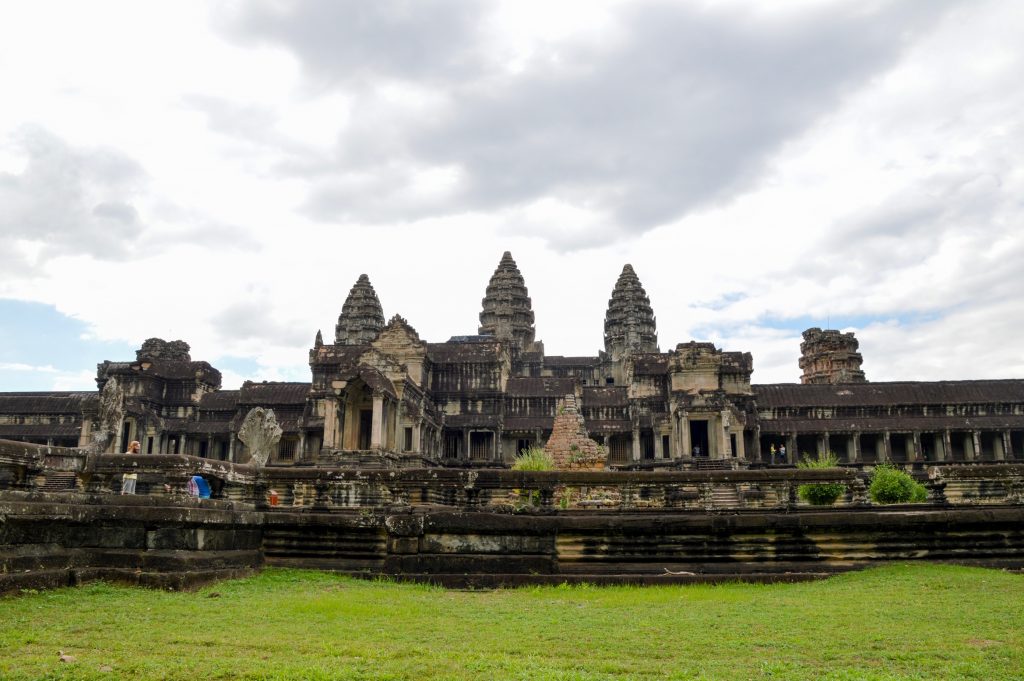
The Bayon
The second-most famous temple after Angkor Wat is The Bayon. It’s the temple topped with enormous carved faces. It also has some extremely impressive carvings along long walls. We could have listened to our guide tell us the stories told in the carvings for hours, except that it was 100 degrees and there was no shade.
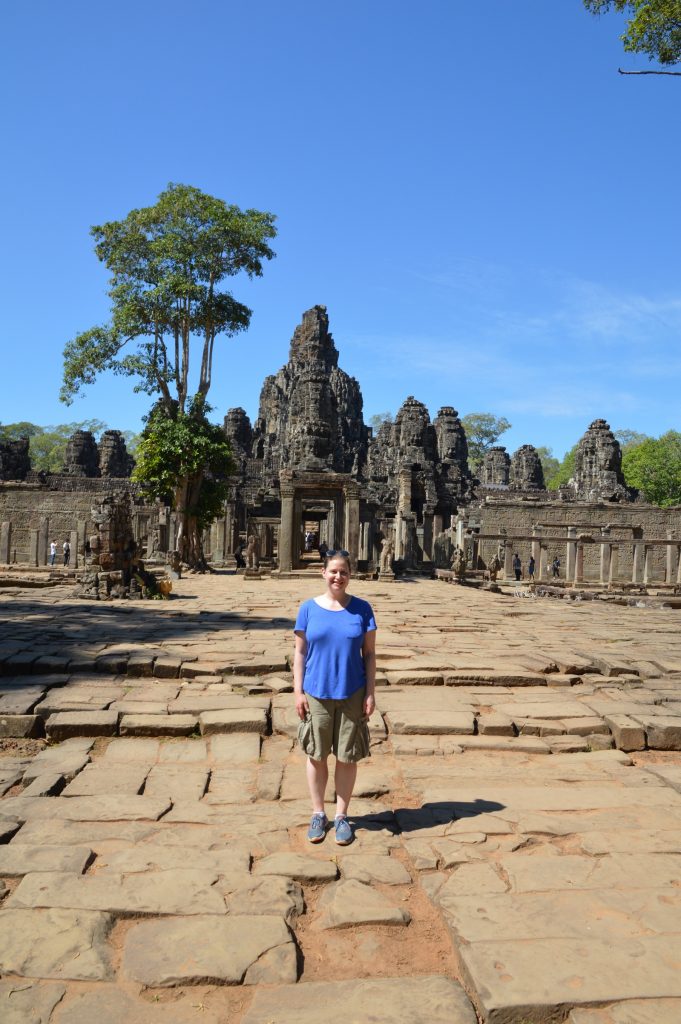
The Baphuon
Close to The Bayon is The Baphuon, a massive temple with a raised walkway leading to it and many steps to climb (we climbed halfway up). It offers great views of the whole area of Angkor Thom, the ancient capital city, which contains it as well as The Bayon.
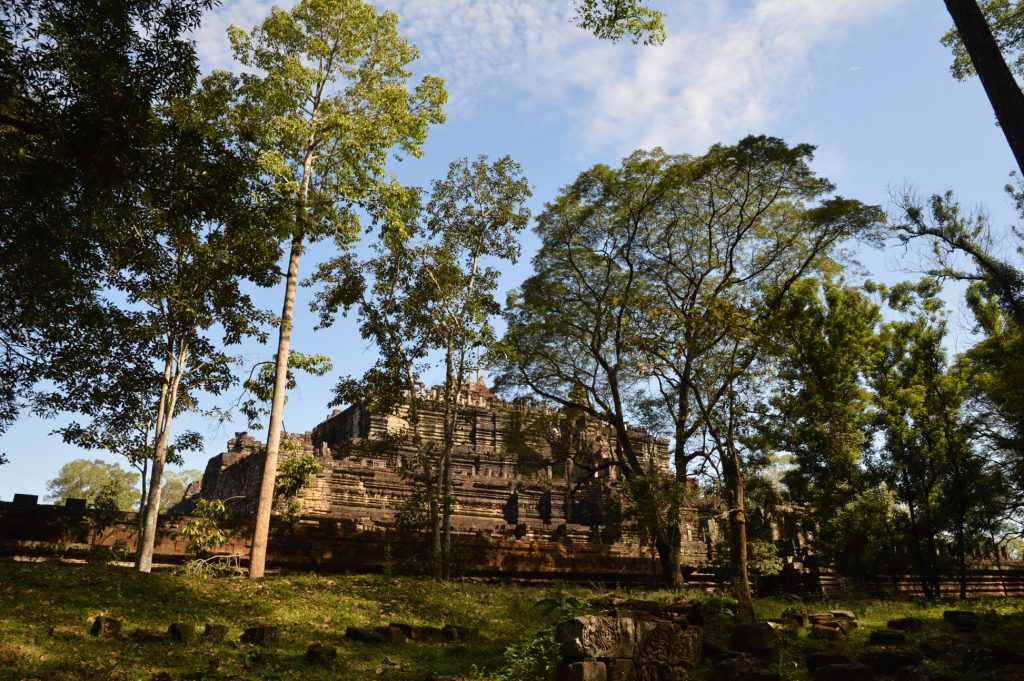
Phimeanakas
Also part of Angkor Thom, Phimeanakas wasn’t one of the temples our guide brought us to, but we sought it out on our own. It’s set back a bit, so you take a nice stroll to visit, and can also explore the wooded area around it.
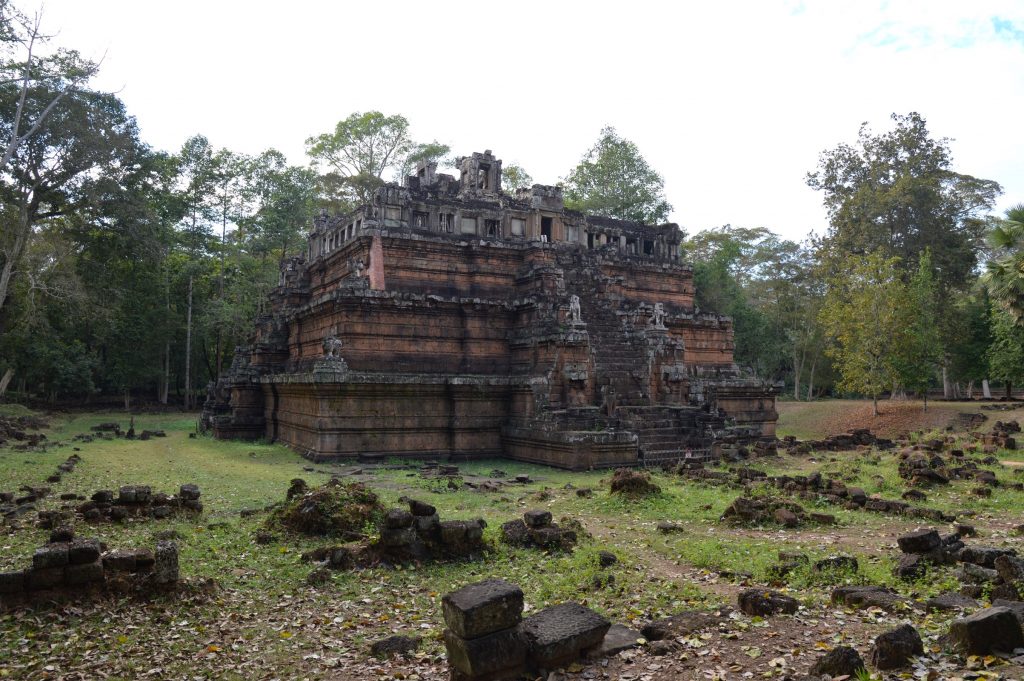
Ta Prohm
When most of the temples at Angkor were restored, the trees growing in and on top of and through the ruins were cleared. At Ta Prohm this wasn’t done, so there are massive rooty trees growing everywhere and it makes for a very cool sight atmosphere that’s a bit different from the other temples. It’s also famous because it was featured in the Tomb Raider movie. We got to this temple relatively early – our first temple of the day – and it was already filling up with people.
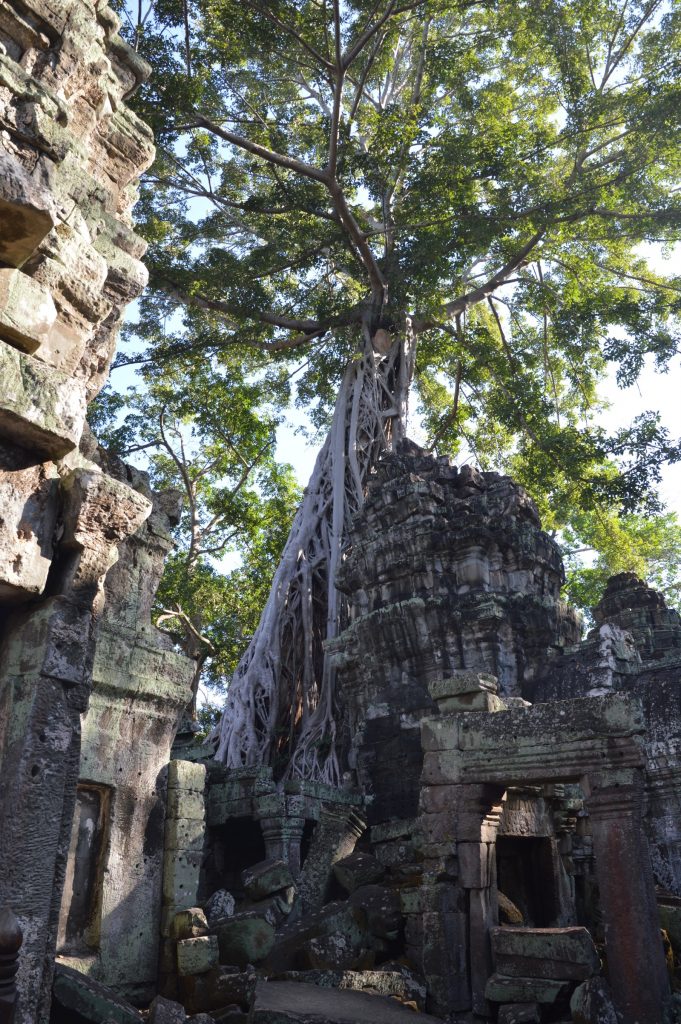
Ta Som
Ta Som is similar to Ta Prohm in that it has trees growing in and on the temple. The massive carved head with the tree growing out of it at the end of the temple is one of the coolest things we’ve seen.
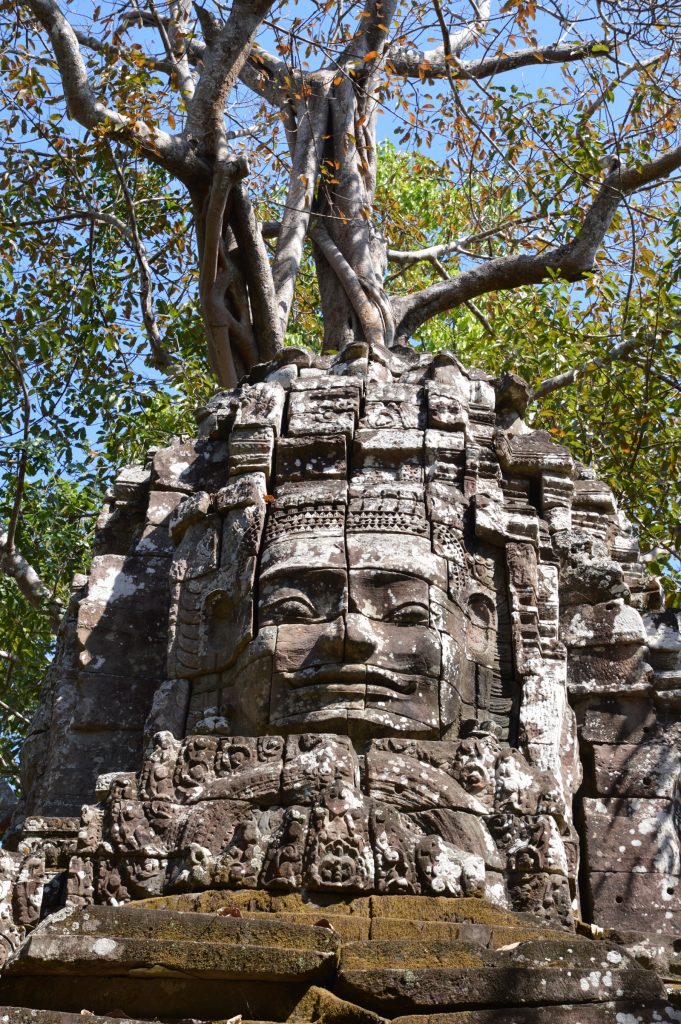
Preah Khan
Preah Kahn also has pretty cool trees growing on temples… and the pictures we took make it look like a really nice place. But in all honesty, it was the last of six temples we visited on our first day and we were pretty exhausted by that point so our memories of it aren’t the clearest. Good thing for cameras!
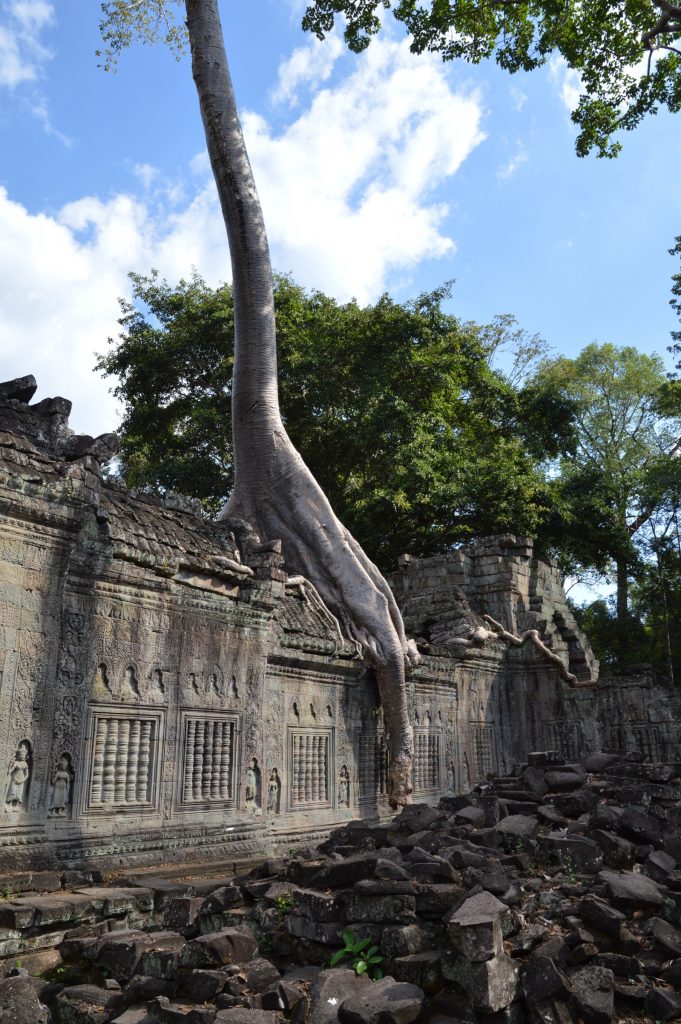
Chau Say Tevoda
Chau Say Tevoda is a smaller temple that we visited on our own, without a guide. It turned out to be one of our favorites. We read that it was a great place to see sunset, so that’s when we went. While we couldn’t actually see the sun set while there since it was surrounded by trees, the way the light hit the building was incredible and beautiful. We also had the entire temple to ourselves to enjoy.
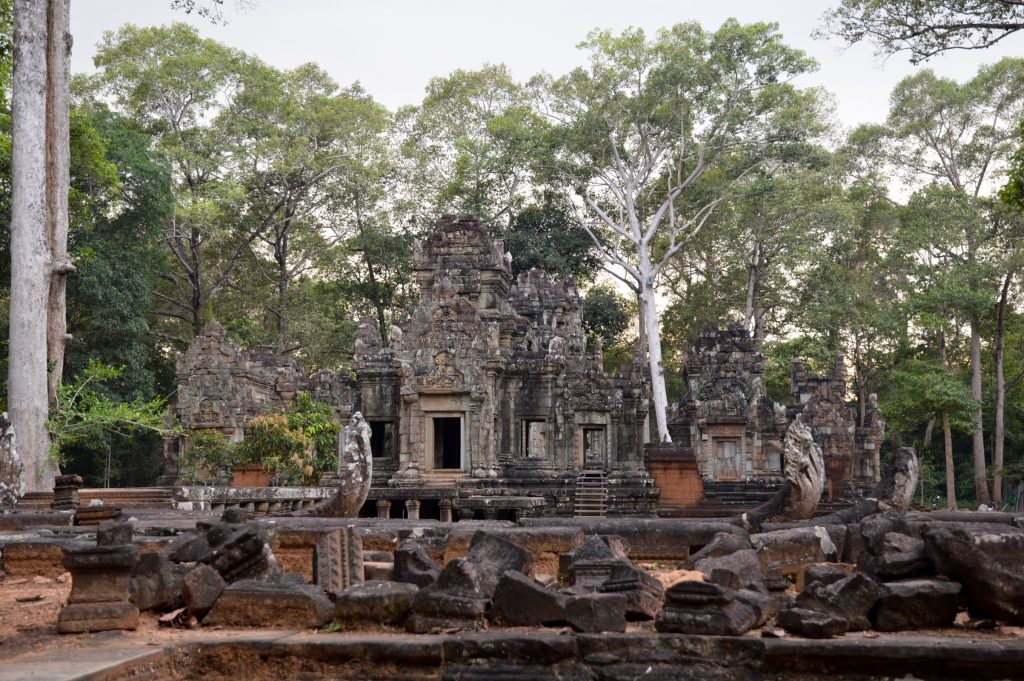
And we did get a chance to see the sunset on the way back after all.
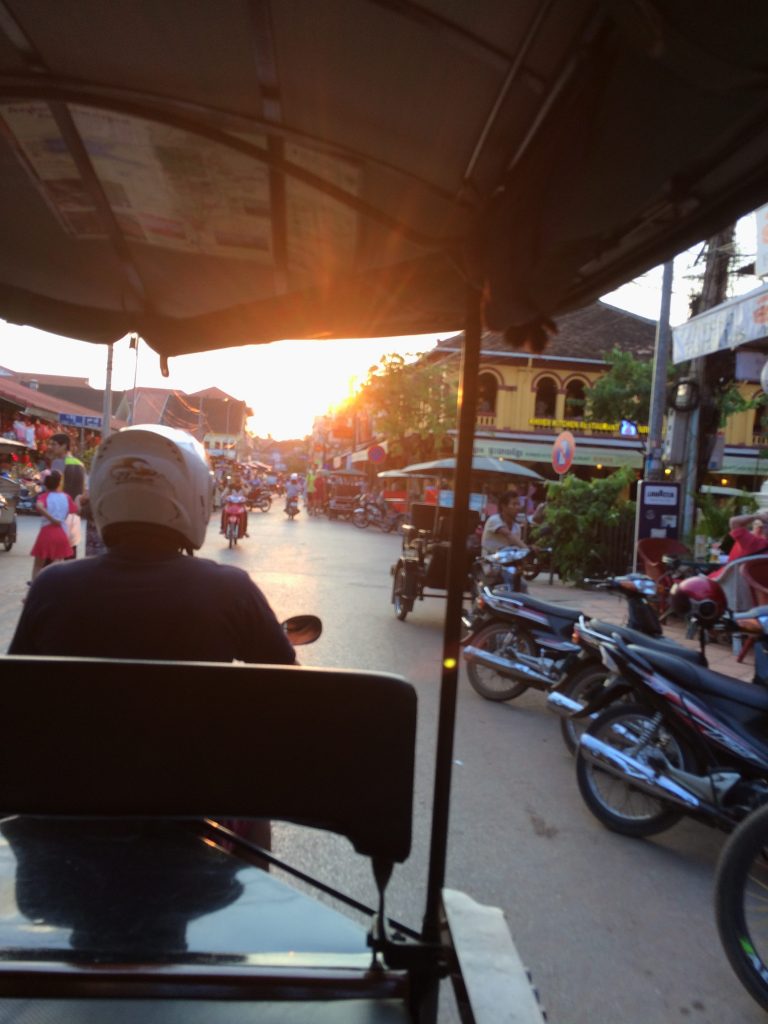
Thommanon
Right across the road from Chau Say Tevoda is Thommanon. It’s similar in size and style. It also has some impressive carvings you can get up close to. We were the only tourists there, however, there was what seemed like a meeting of park rangers going on.
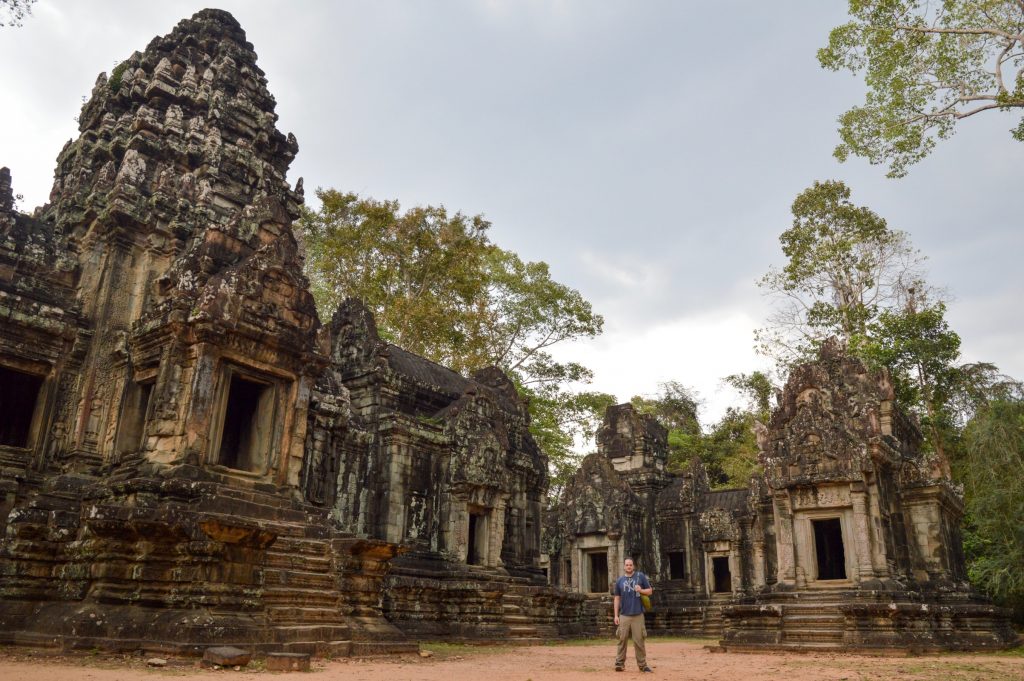
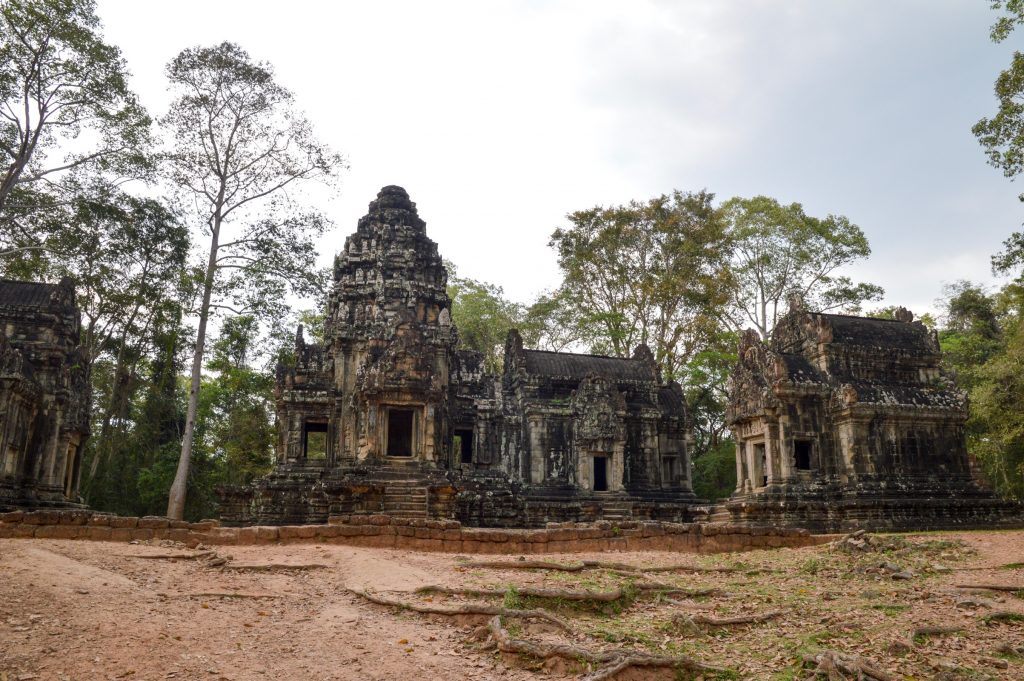
Ta Keo
Ta Keo was another temple we visited on our own. It’s pretty big but not so ornate. We climbed to the top to get some nice views. It was especially lovely in the late afternoon.
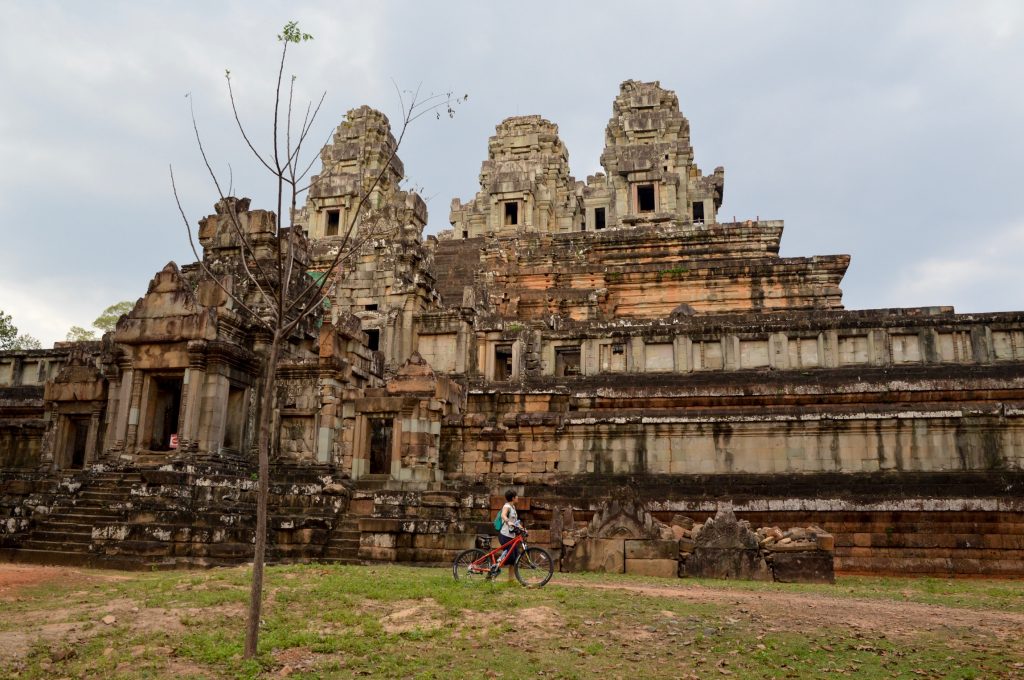
Banteay Srei
Banteay Srei was actually the first temple our guide brought us to. It’s located a bit further outside the main Angkor complex (and thus required a car vs. tuk-tuk). Our guide tried to avoid the crowds by going early, but alas we arrived at the same time as a tour group. The temple is relatively small compared to Angkor Wat and The Bayon, but is quite stunning. The color of the stone makes it look pink and the carvings are exquisite. With the crowds it was a bit difficult to get the best photos, but that didn’t stop us from enjoying it.
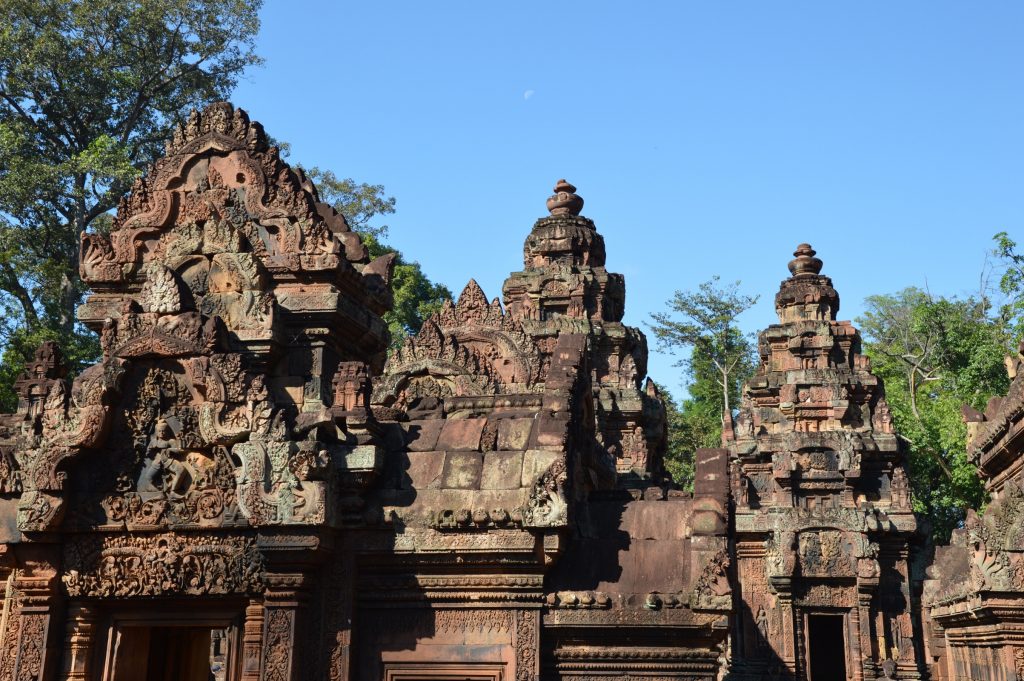
Banteay Samré
This temple is close to Banteay Srei, which more people visit. We really enjoyed Banteay Samré, though. There were hardly any people there and it was interesting to walk around.
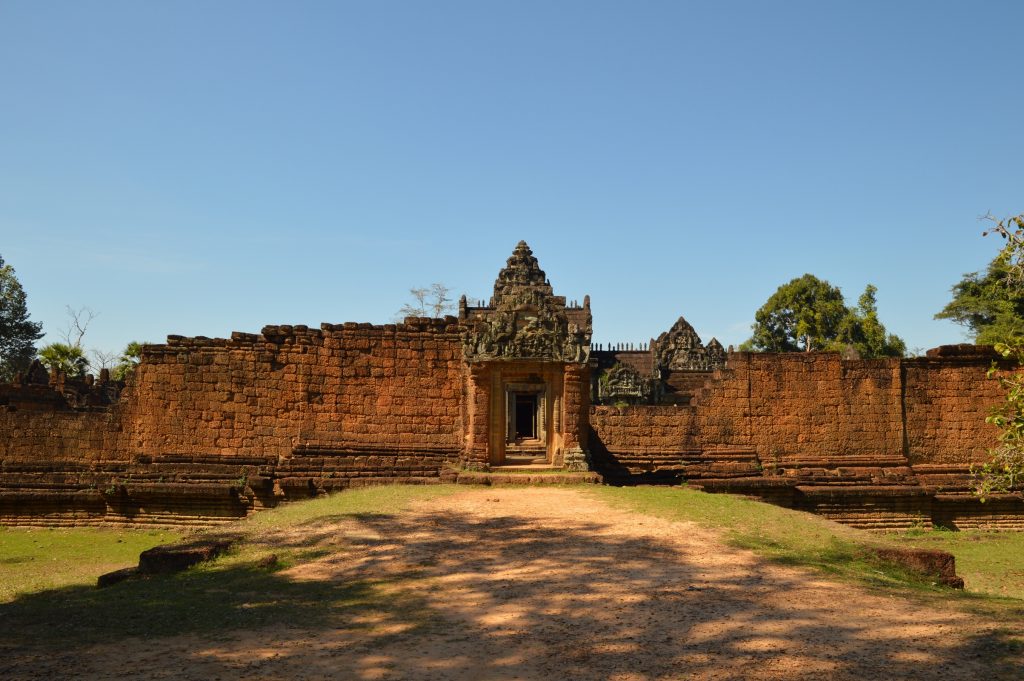
Pre Rup
Pre Rup was another one of our favorites. Our guide said it’s also known as the Pisa temple since one of its towers is leaning. It’s quite large and includes some stairs to climb and lots of places and things to explore. The views are great and there are lion sculptures!
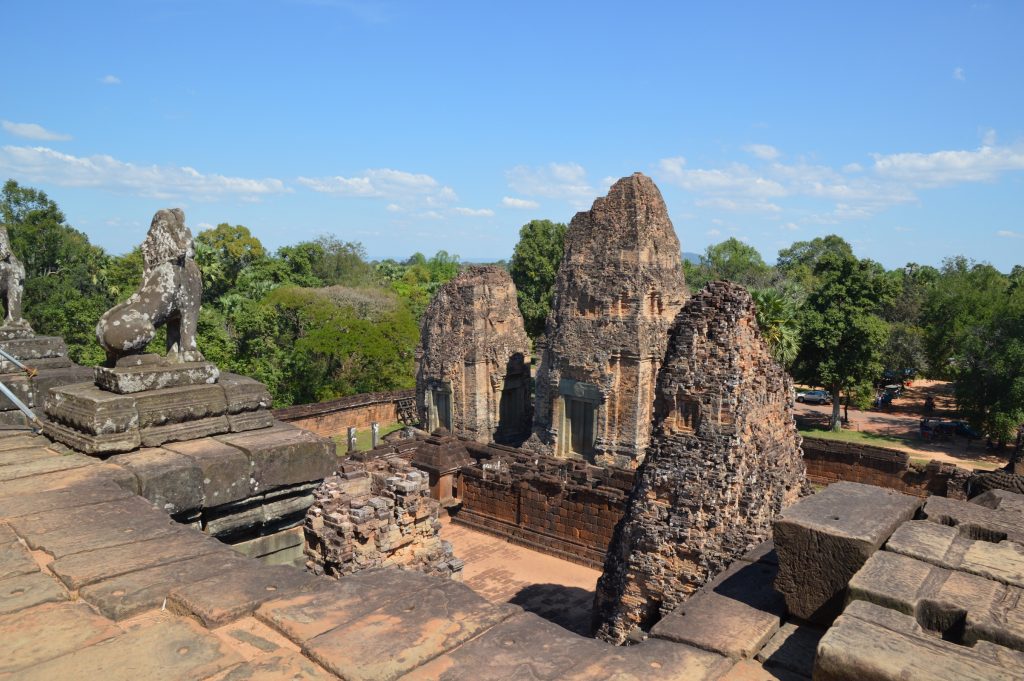
Neak Pean
To get to Neak Pean, you walk across a raised walkway surrounded by water and ghost forests. It’s one of the most eerie, awesome places we’ve ever been.
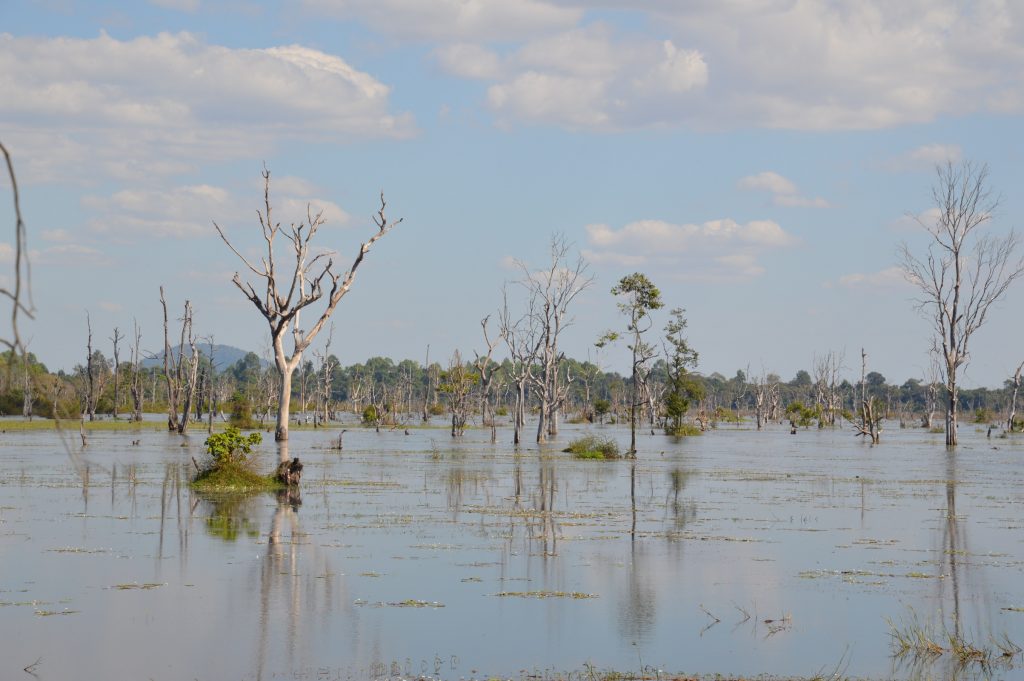
The gates
To get in and out of Angkor Thom (the ancient city), you pass through five massive, gorgeous gates. They are topped with four carved faces and have walkways (or now roads) leading up to them lined with sculptures of gods and demons.
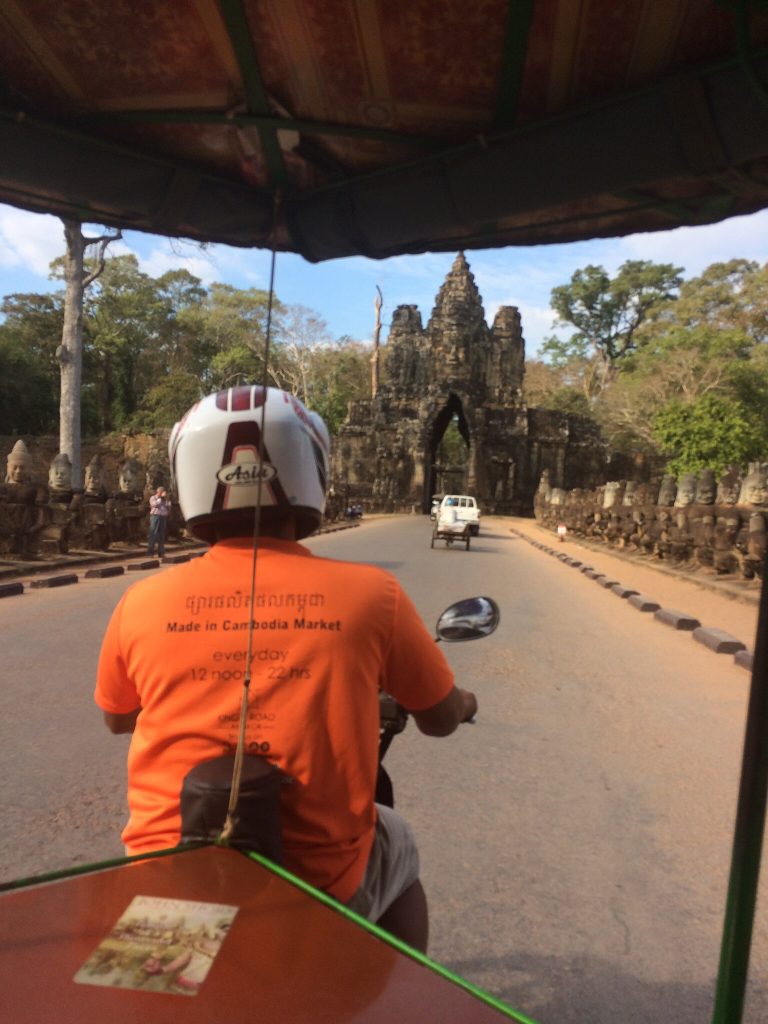
Siem Reap
We spent one day not at the temples. We mainly relaxed at our lovely hotel pool (highly recommended).
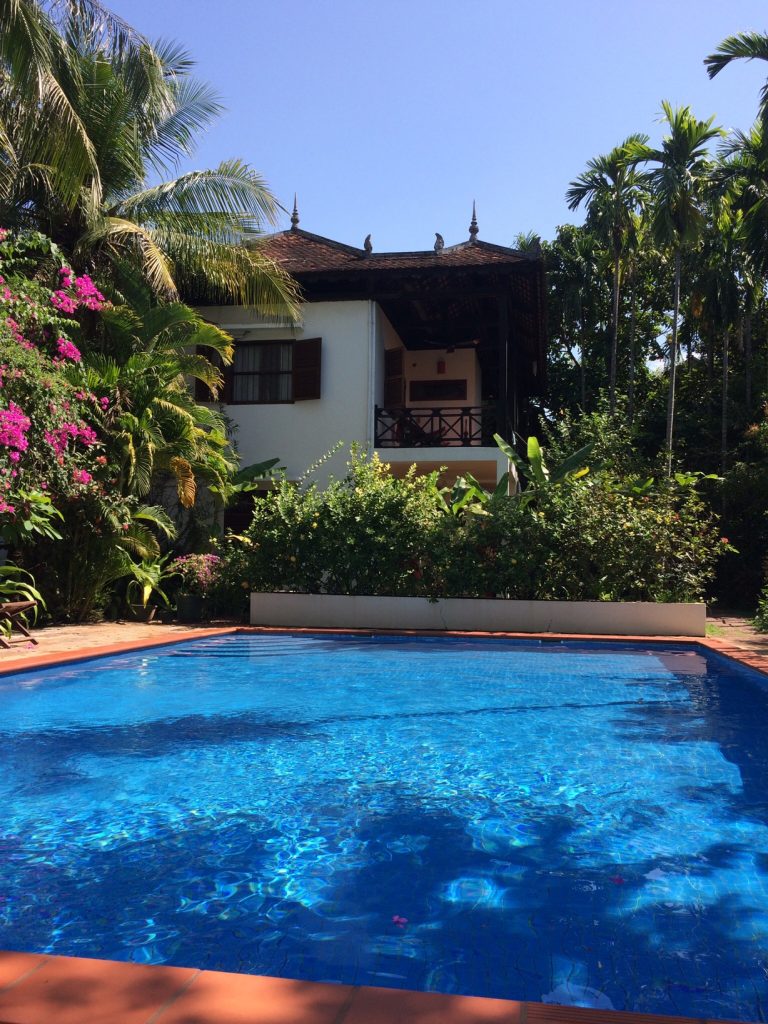
We also took some time to walk around and explore Siem Reap. Much of the main tourist area is very backpackery, with a ton of bars and cheap fish massage places.
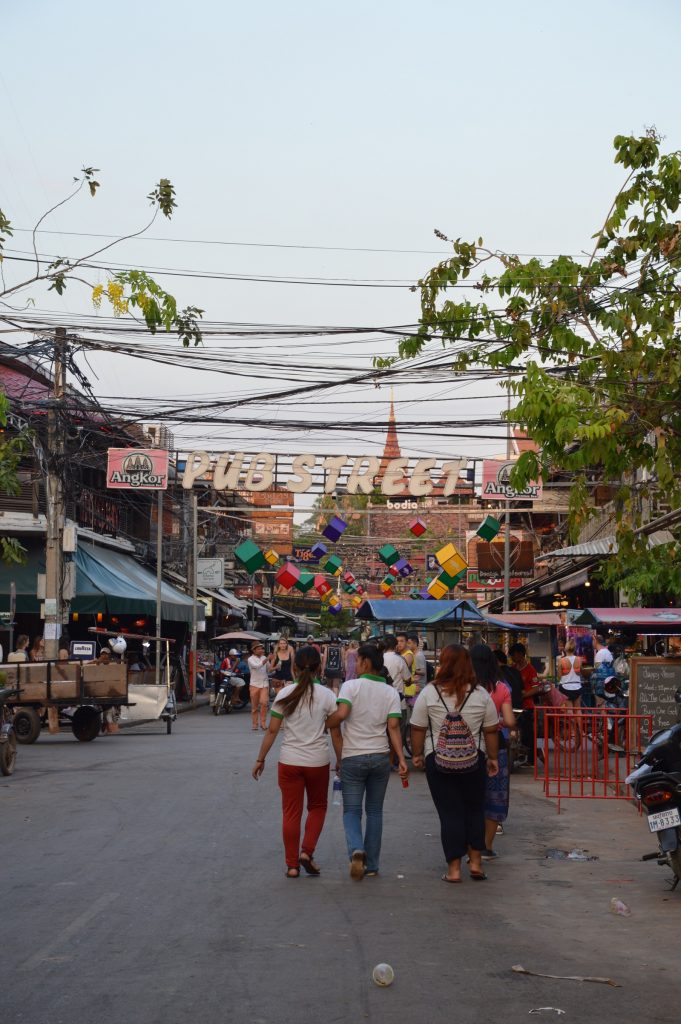
While we hung out in that area a couple evenings, we preferred the quieter parts of town. Around the Royal Residence there’s a lovely park and the Royal Gardens, as well as a big Buddhist temple.
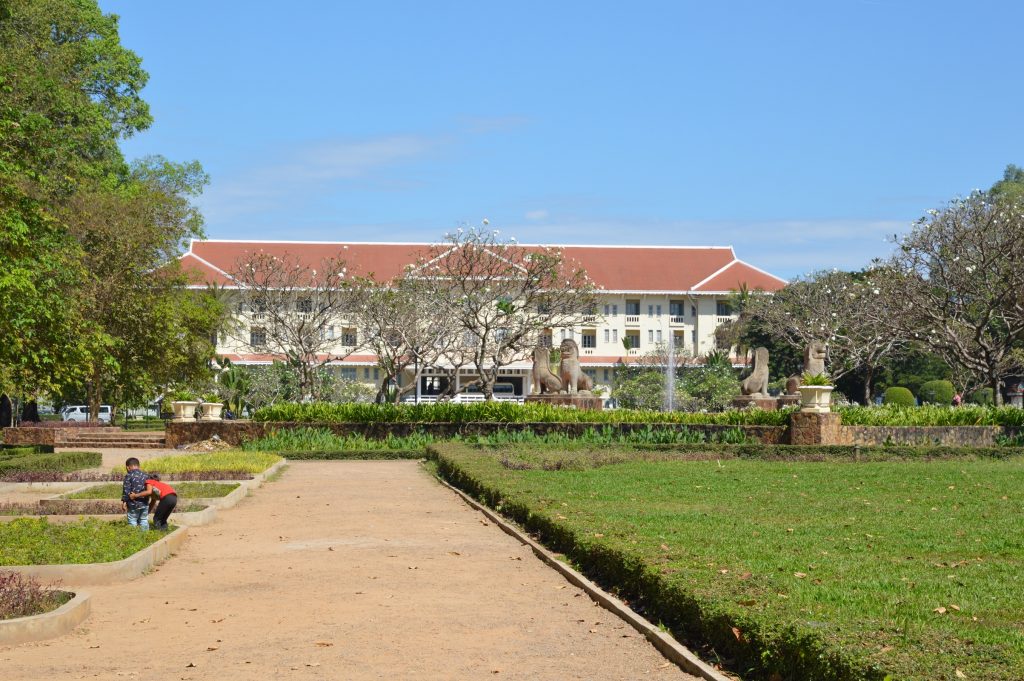
The Siem Reap River runs through the city and various bridges to cross it.
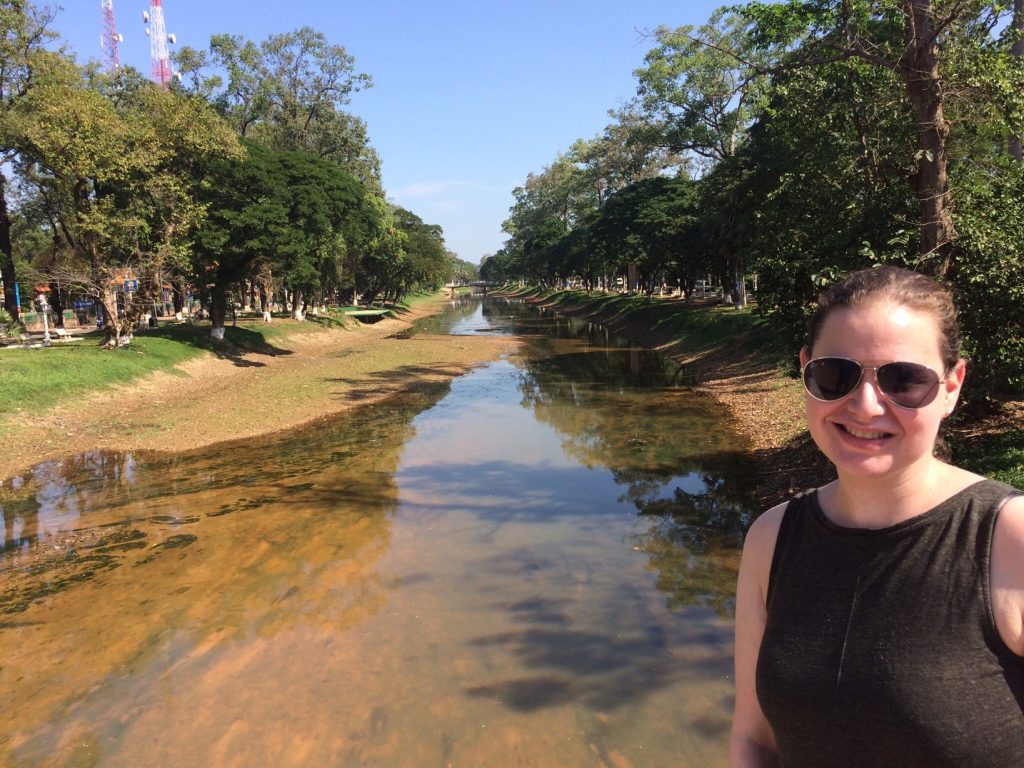
There are a few other modern temples scattered about as well.
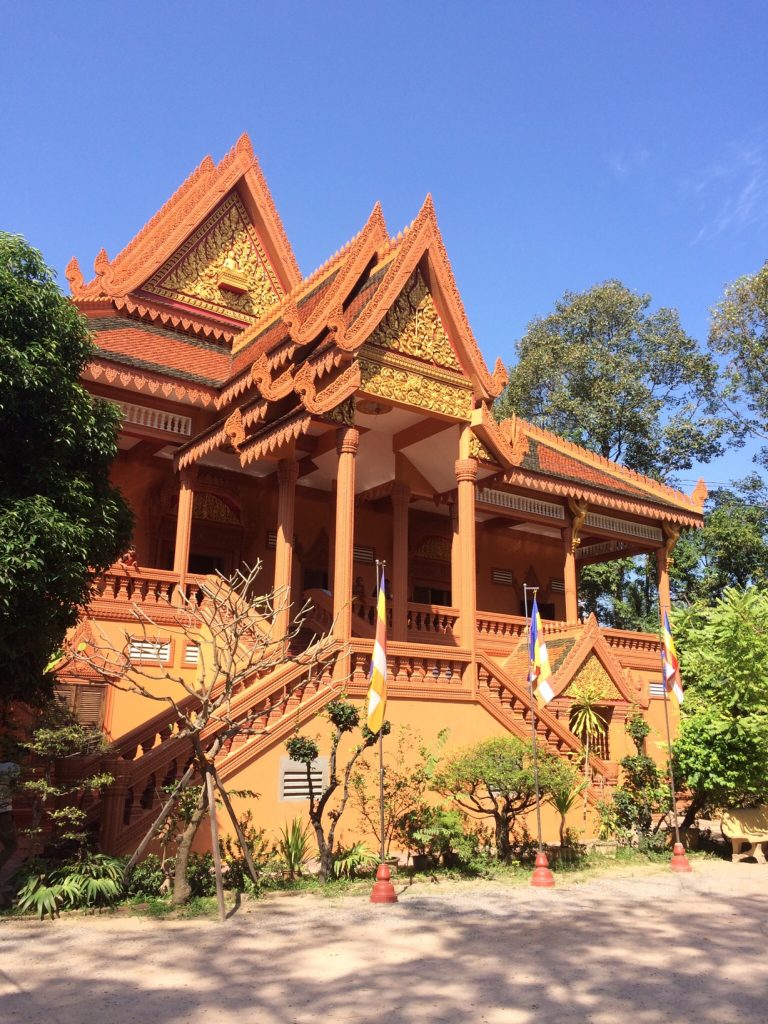
And for shopping, there’s the Night Market and a smaller Made in Cambodia Market.
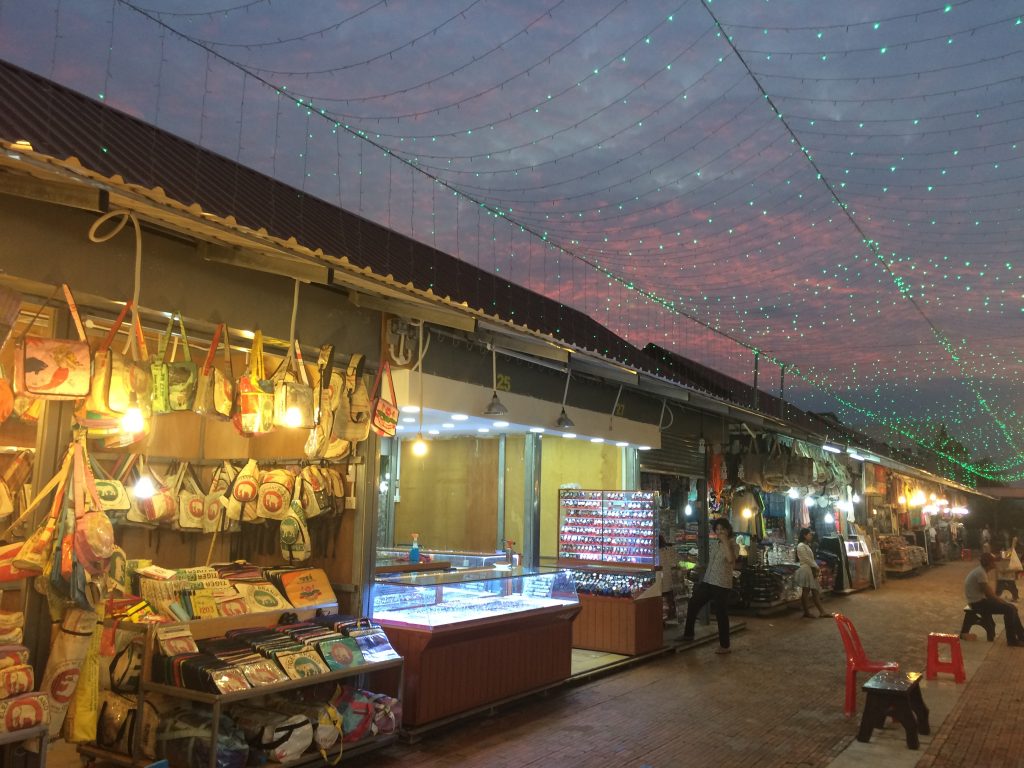
One can easily occupy a few days in Siem Reap… or more!
Eats and Drinks
Cambodian food is delicious. It’s not as spicy as other Southeast Asian cuisines, but it’s definitely flavorful.
- On the temple days, the guides will take you to touristy spots they get kickbacks from. Luckily, the first place our guide took us served us two of our favorite dishes – both soups. Sarah had the fish amok – probably the most ordered dish. Justin had a green curry that was just as delicious. We sadly have no idea what the restaurant was called, but we’re sure lots of guides bring tourists there.
- We ate at two places – Marum and HAVEN – for dinner that help the community by training at-risk youths to work in their restaurants. Both were absolutely delicious and lovely experiences overall.
- On Pub Street we found a less nutty pub, Beatnik Speakeasy, with a great happy hour ($1 pints) and good burgers.
- Not on Pub Street, in a quieter part of town, is the Siem Reap Brewpub. Their beers were quite good, as was their banana flower salad.
Logistics
Temple passes
We spent five nights and four days in Siem Reap and bought a three-day temple pass. The current pass is good for three days within a ten-day period. The morning of our first day our guide took us to the center where you buy your pass. They take your picture which is printed on your ticket. You can’t lose your ticket! The prices of the passes increased just a few days after we visited, but even now we think they are well-worth the price for what you get to see.
Guide
We had made arrangements with a recommended guide for our first two days. He arranged to spend one day in a car and went a bit further out (to see Banteay Samré and Banteay Srei) and then the next day in a tuk-tuk to see the main, closer temples. The third day we were on our own and hired a tuk-tuk driver for the afternoon to take us to some of the smaller temples. Having a guide is worth it to learn about what you’re looking at without having to read it as you walk around. Our guide was particularly knowledgeable about all the temple restorations. They also know more about which temples are likely to be less busy at particular times of day. We’re not tour guide people and it got a little draining after two days, but we’re happy we did it.
Our temple itinerary
Here’s the order in which we visited all the above temples:
Day 1 (full day, including lunch): Banteay Srei, Banteay Samré, Pre Rup, Ta Som, Neak Prean, Preah Khan
Day 2 (morning-early afternoon, including lunch): Ta Prohm, The Baphuon, The Bayon, Angkor Wat
Day 3 (late afternoon): Phimeanakas, Ta Keo, Thommanon, Chau Say Tevoda
Weather
Cambodia is a hot place. It’s especially hot when you’re walking about ruins with not much shade in the middle of the day. For a day visiting the temples, it’s important to wear sunscreen and hats and drink a lot of water. All the drivers we had gave us unlimited free water, which was much appreciated. Even though it’s hot, one must dress respectfully since you are visiting temples, some of which are still used as places of worship by monks. No sleeveless shirts and nothing above the knee.
Arrival + currency
When we arrived at the airport, we got through our visa-on-arrival pretty quickly since we were at the front of the line, but the customs line took over an hour. You pay for the visa in USD, and actually you can pay for everything in USD. Be sure to bring a lot of single dollar bills. You may get change in Cambodian Rand and you can use those too. Taxis are $7. We arranged ours through our hotel. The hotels are located in Siem Reap and most are about a 20-minute Tuk Tuk ride from the entrance to the Angkor Archaeological Park.
Accessibility
Visiting the temples at Angkor requires a lot of walking. To see some of the temples you have to climb a few stairs, but it’s not mandatory to climb to the top of the biggest temples. We don’t remember seeing anyone in a wheelchair, but it’s probably possible to visit some of the main temples and just view them from the outside. We did see people of all ages and fitness levels throughout the parks. Sarah never felt like she needed her POC, but always took it very slowly especially when it was hottest and when climbing stairs.
Hotel
We stayed at a secluded feeling place called Borann L’Auberge Des Temples which had rooms surrounded by lush gardens. It was closer to the Angkor entrance and further from Pub Street (which we appreciated) than some other hotels.
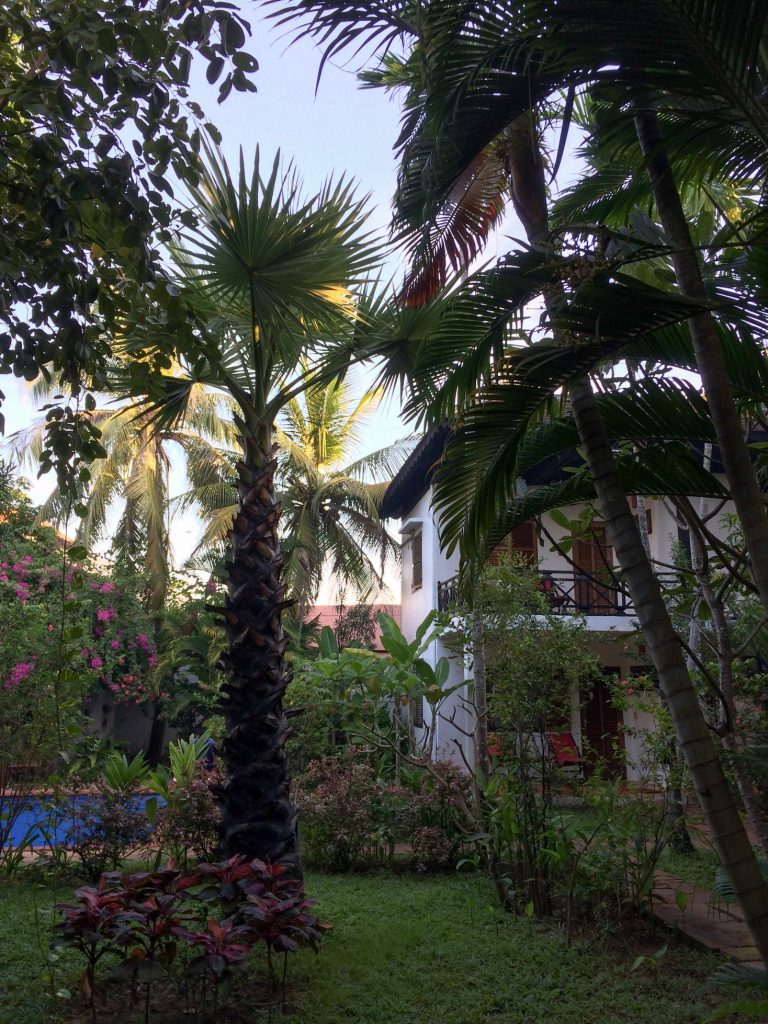
Our first experience in Cambodia was incredible and we would love to return to the country to see more.

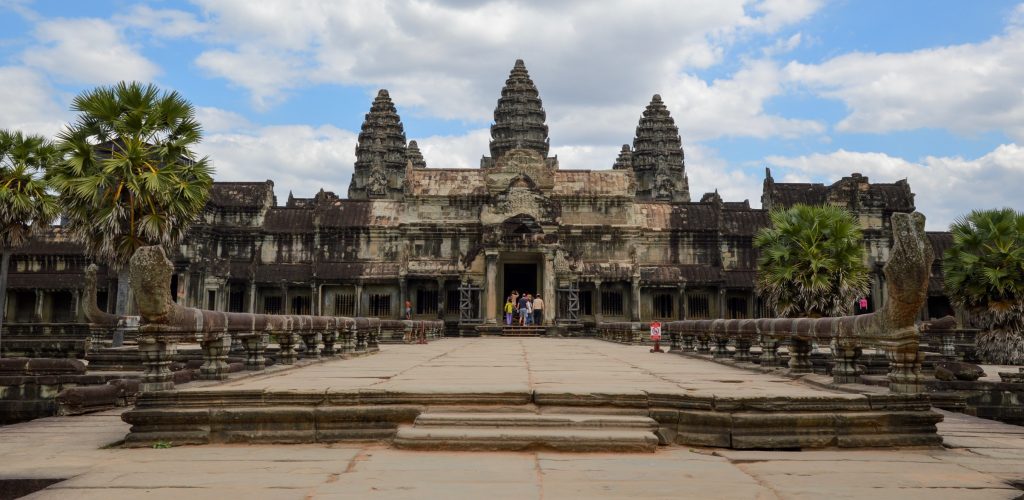
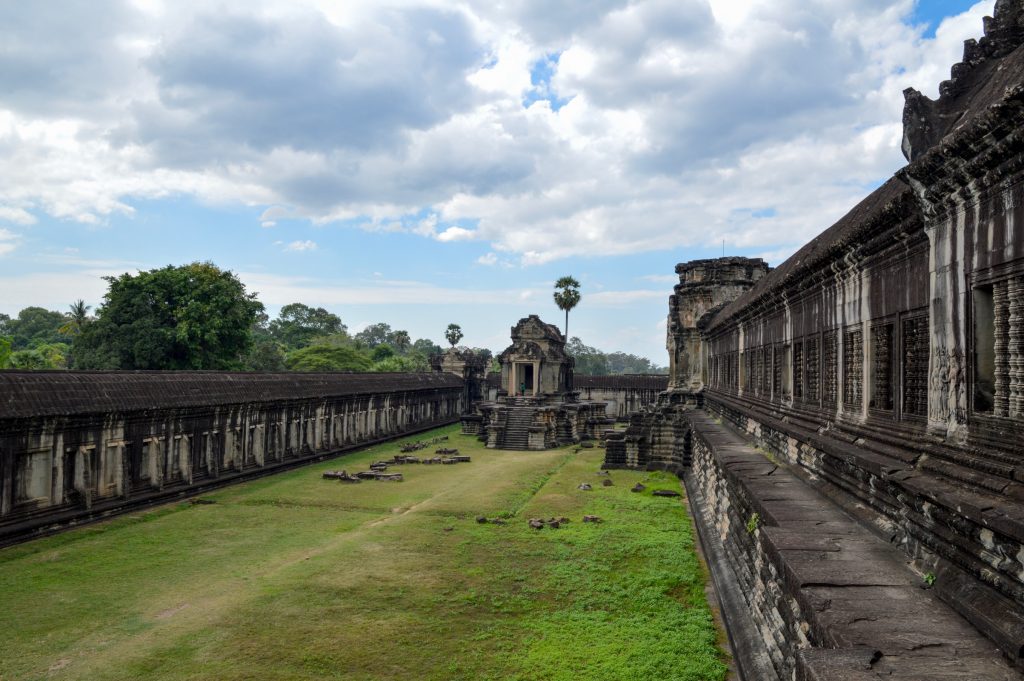
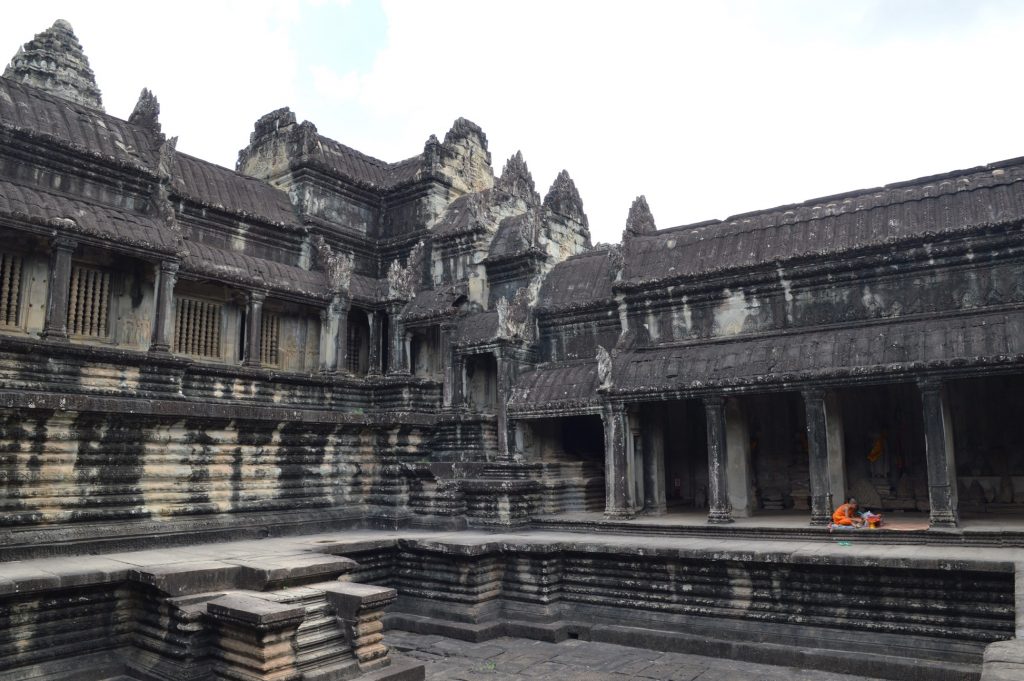
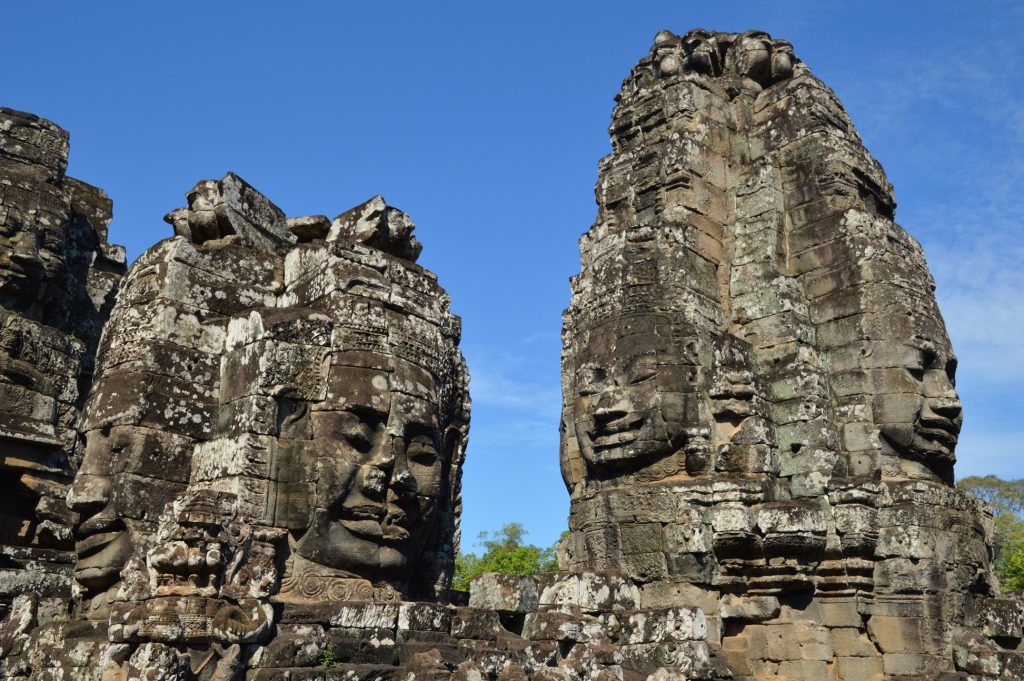

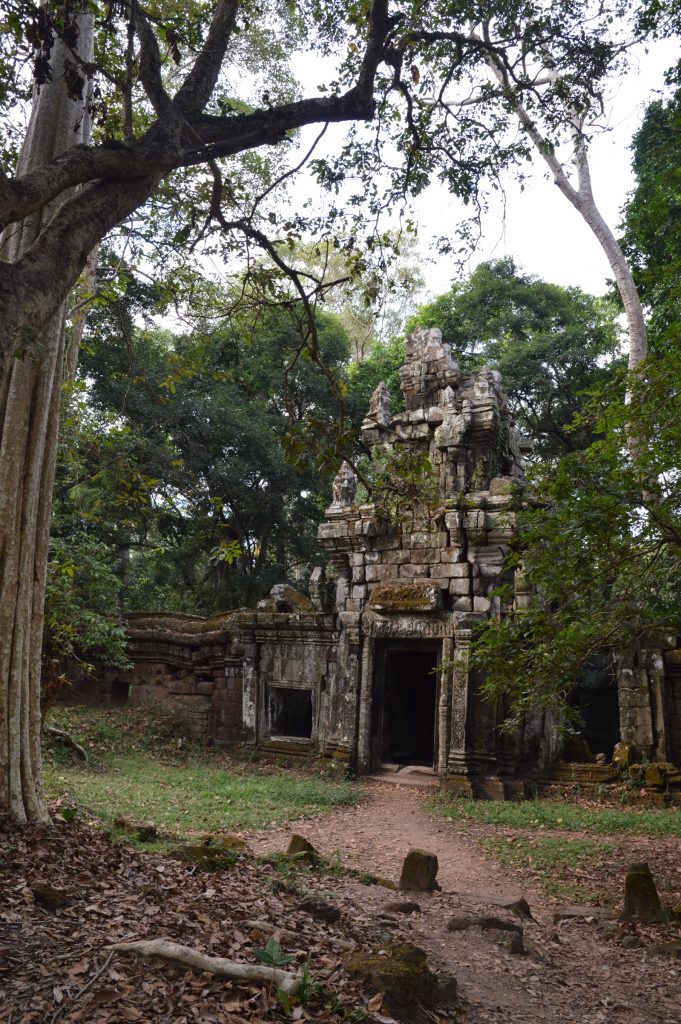
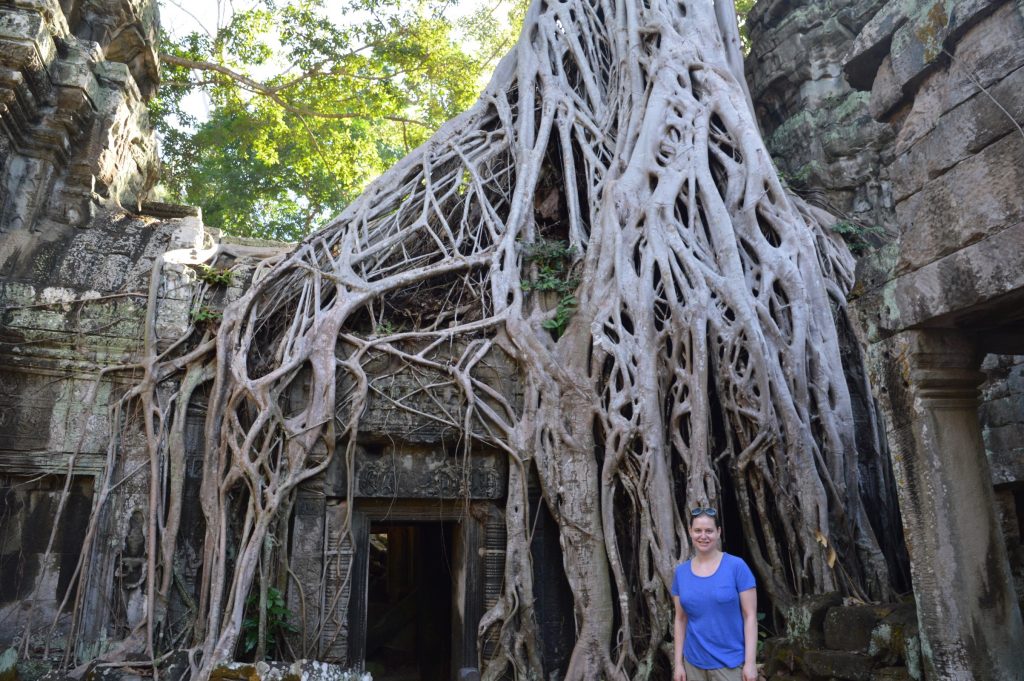
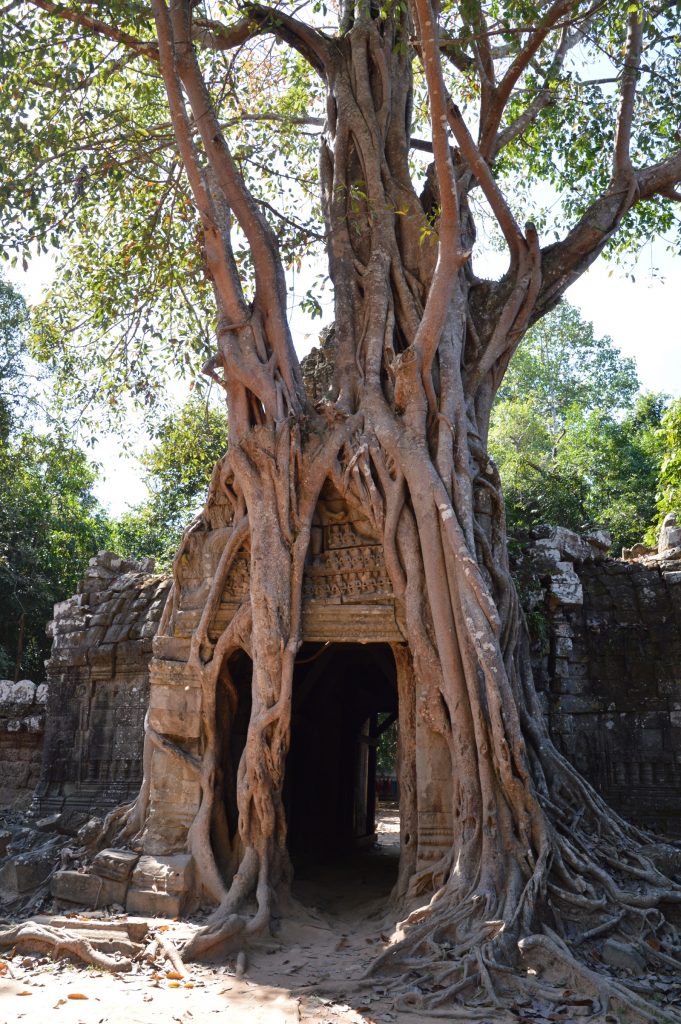
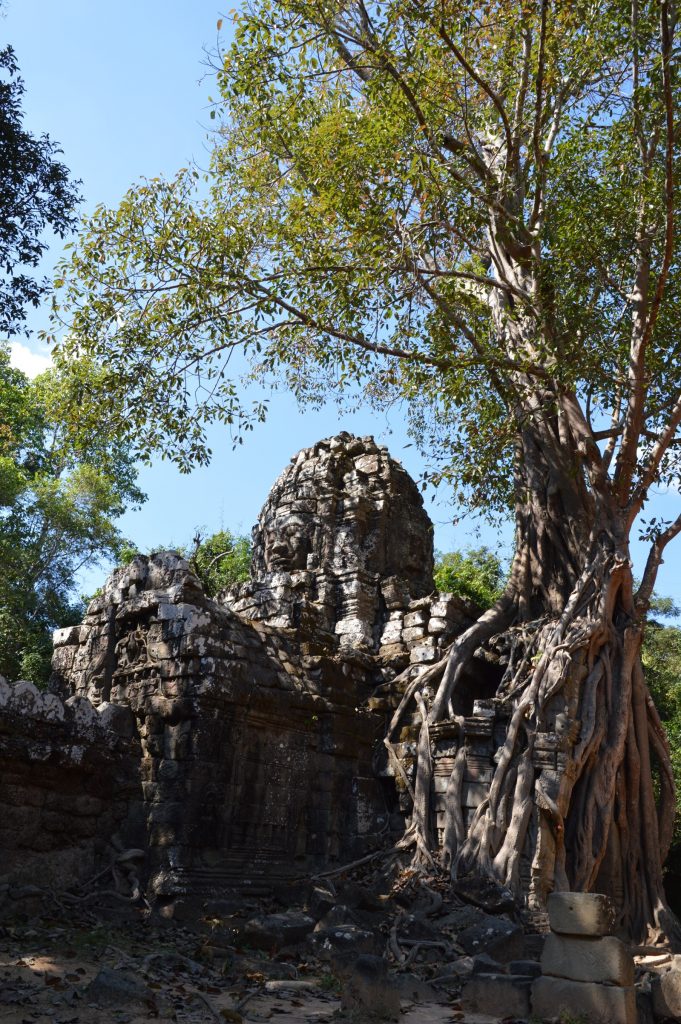
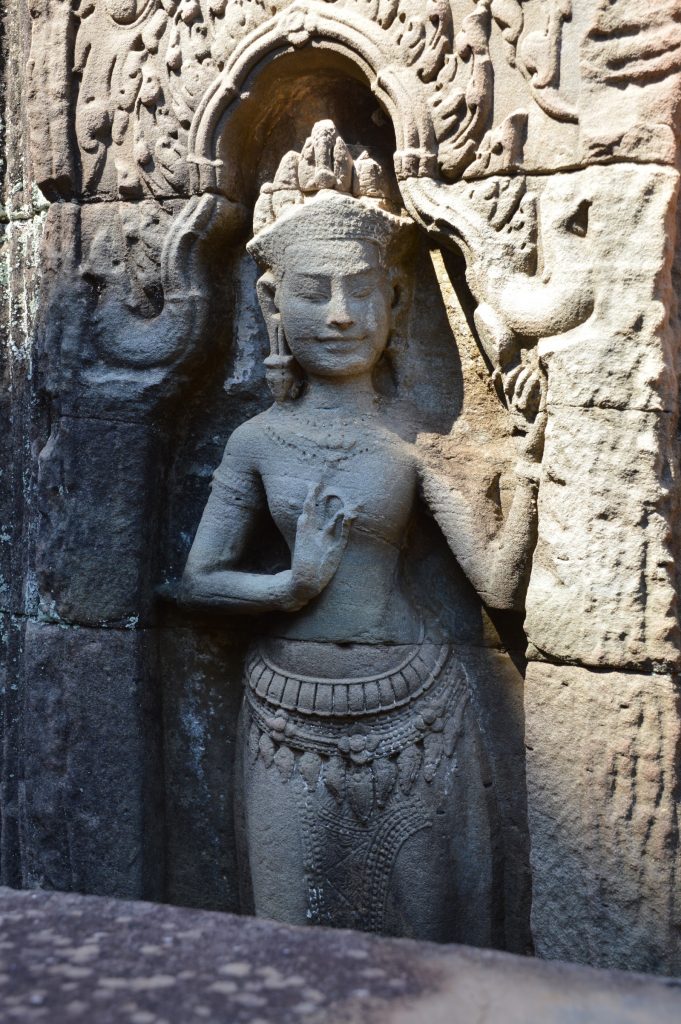
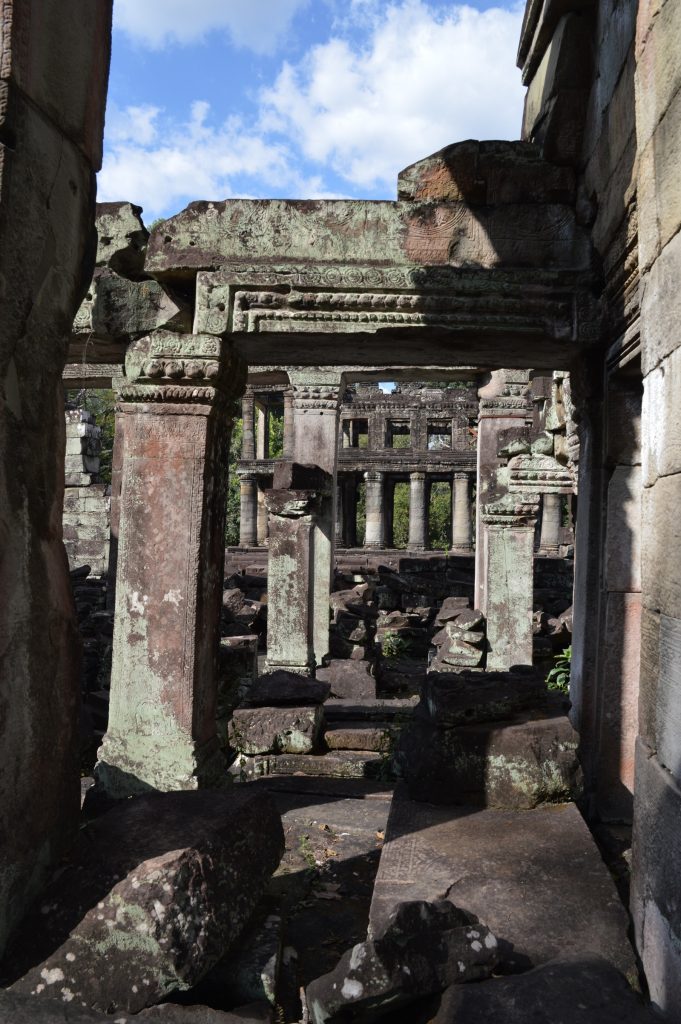
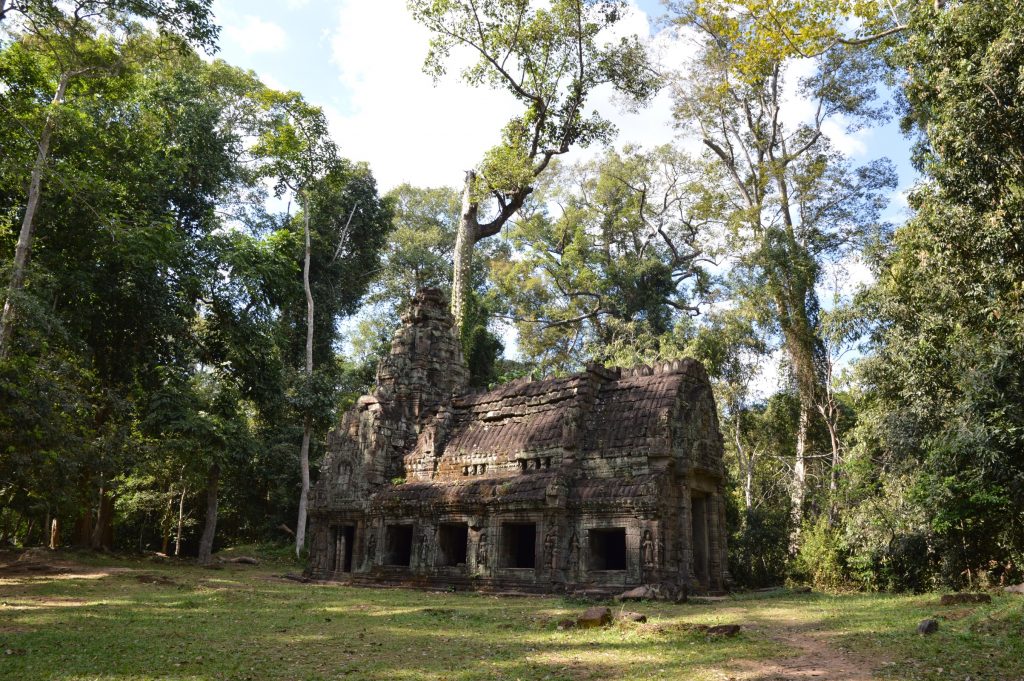
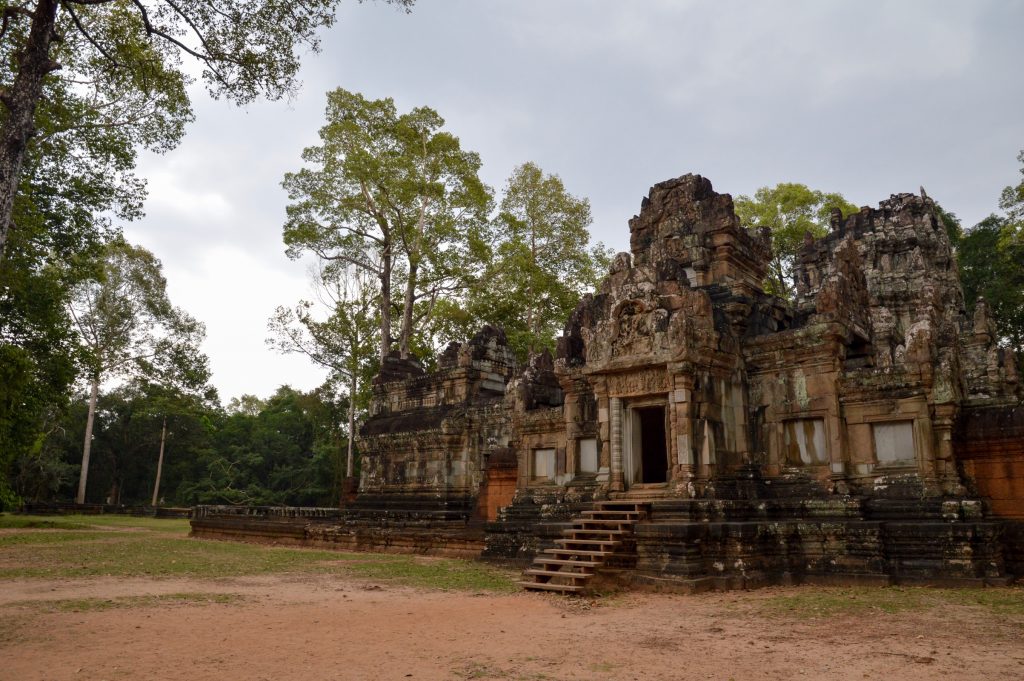
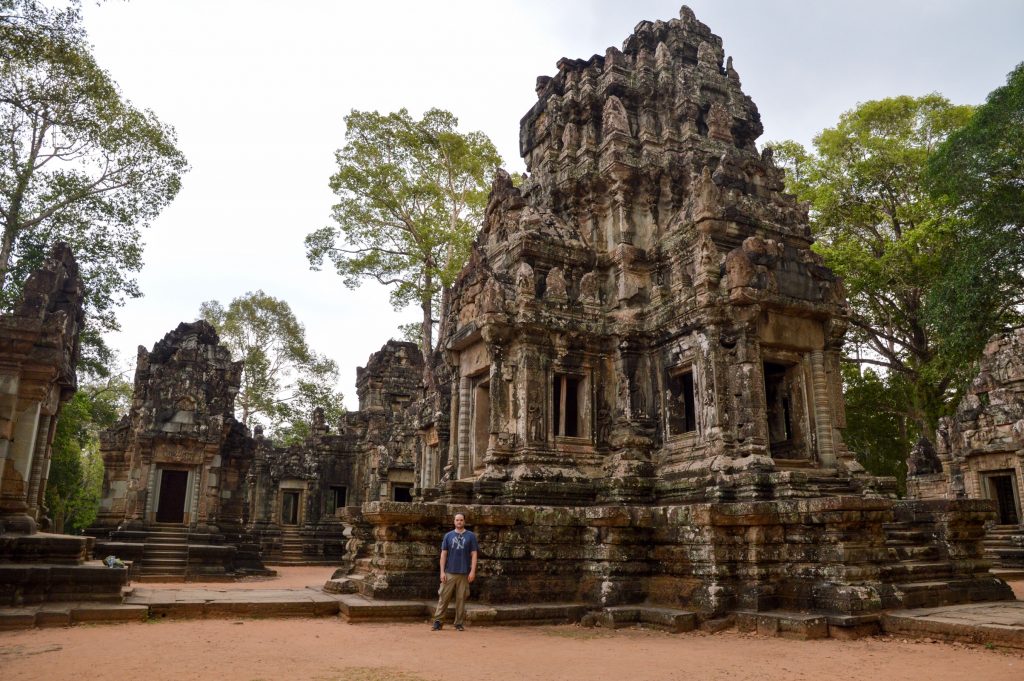
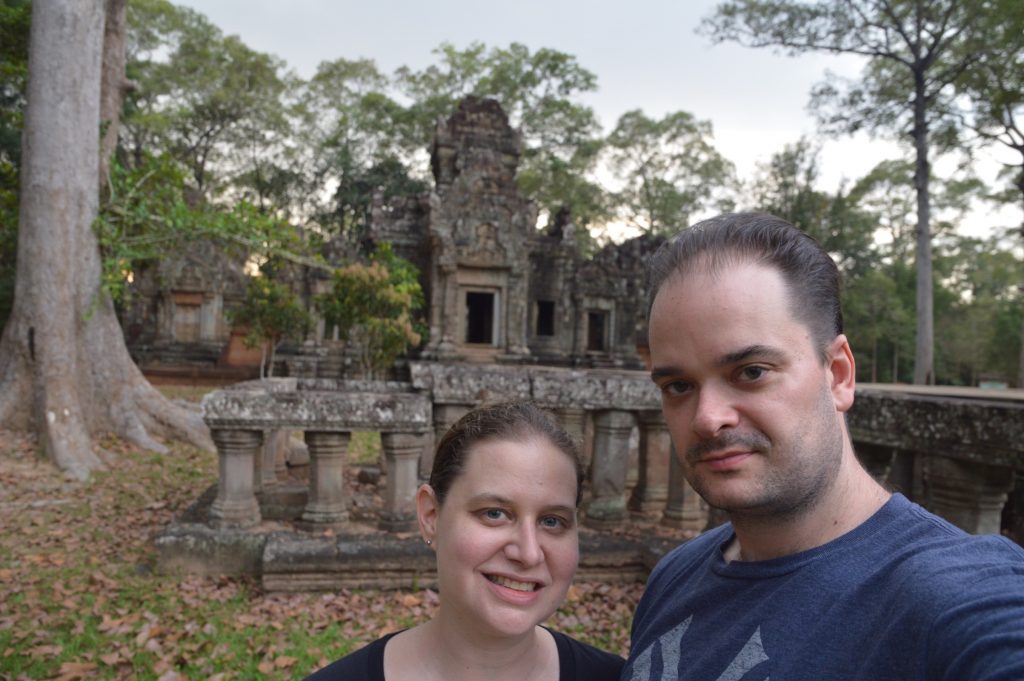
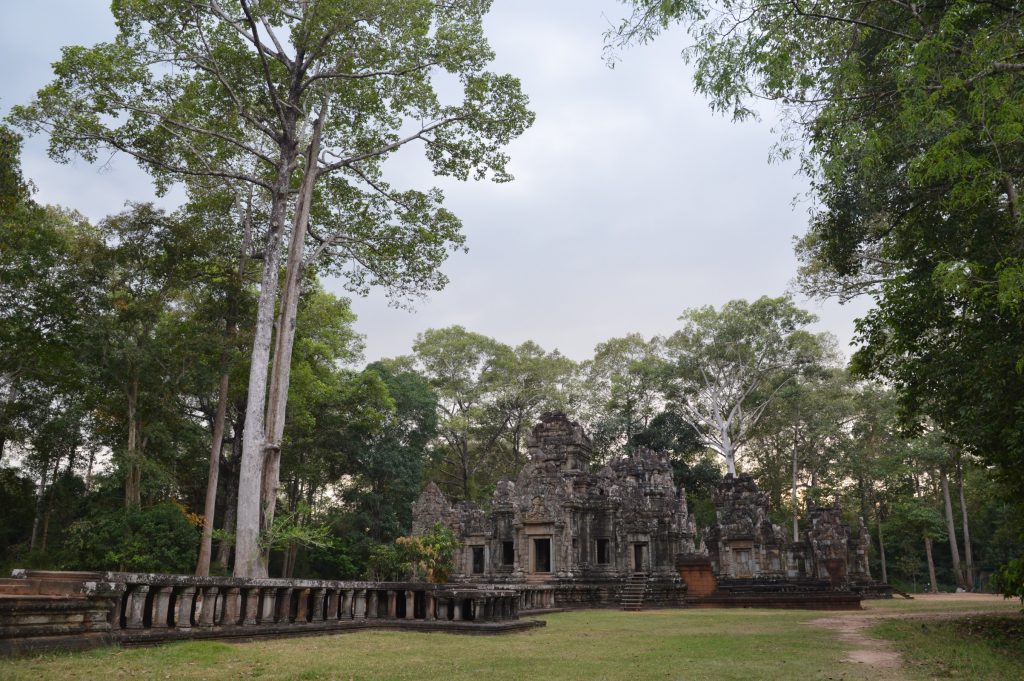
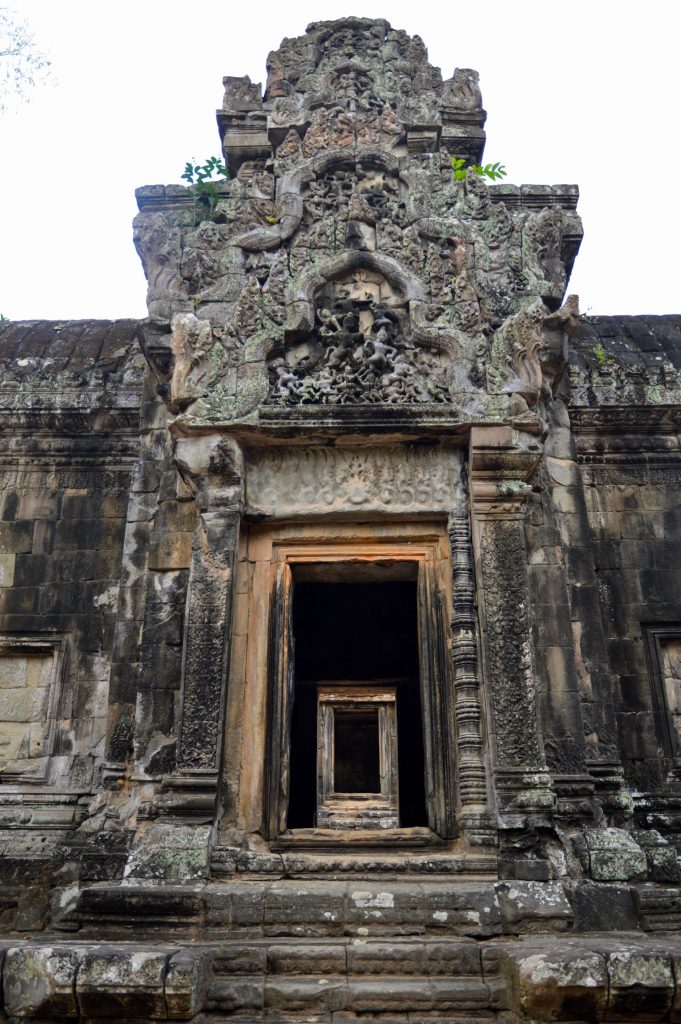
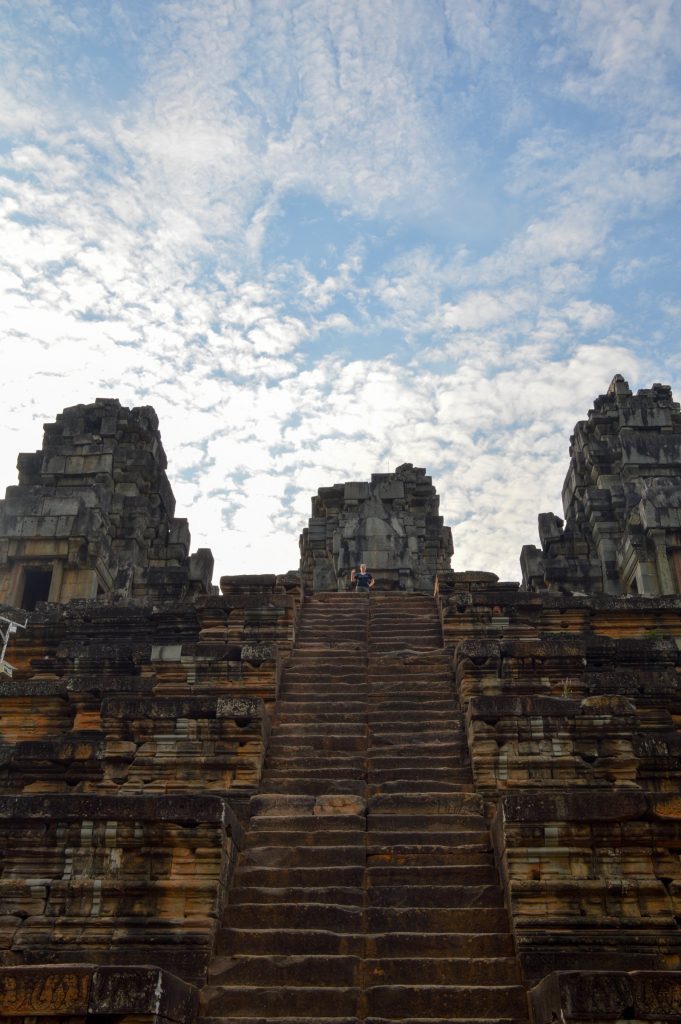
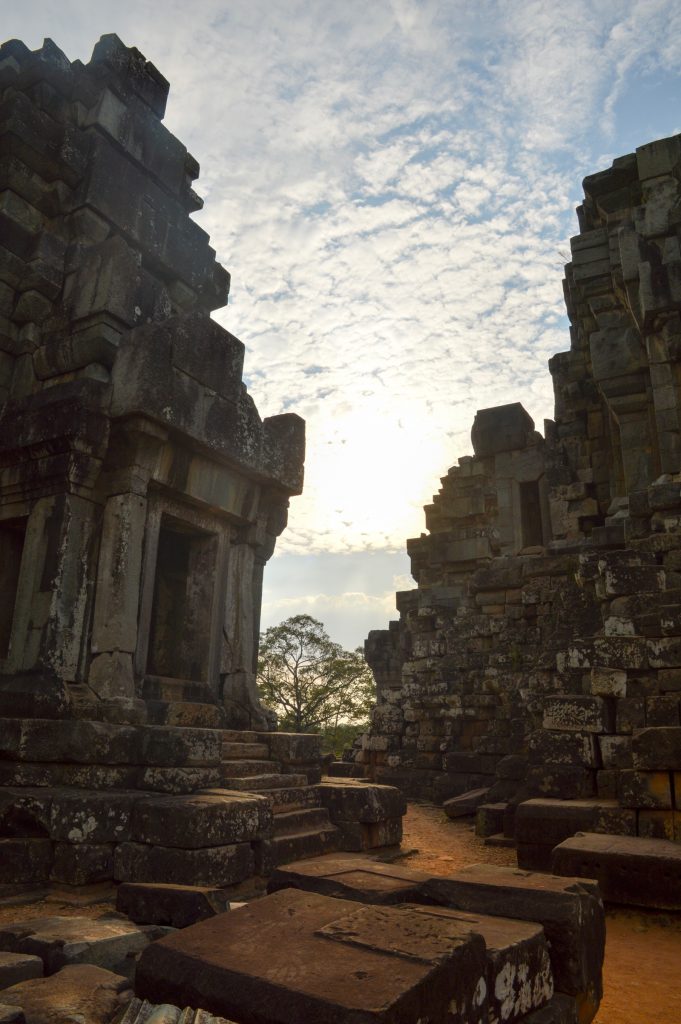
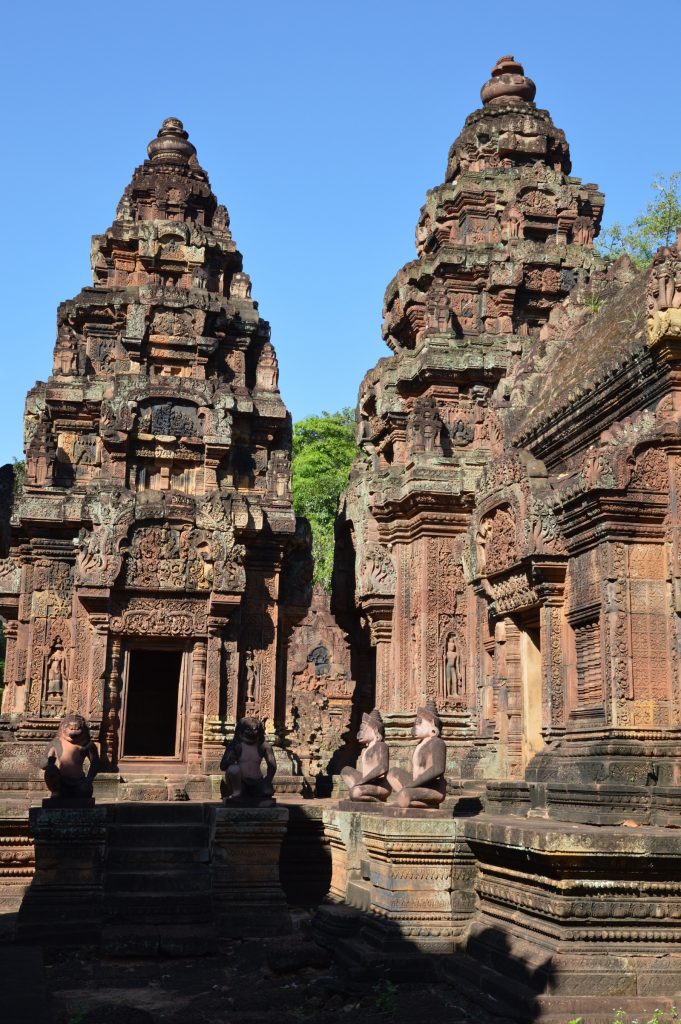
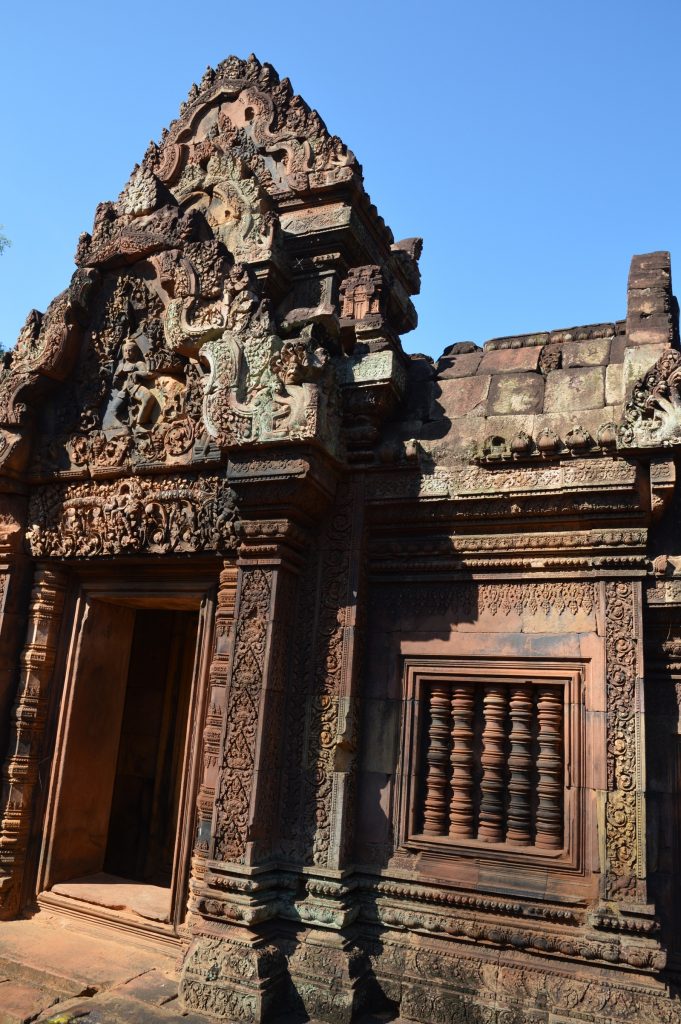
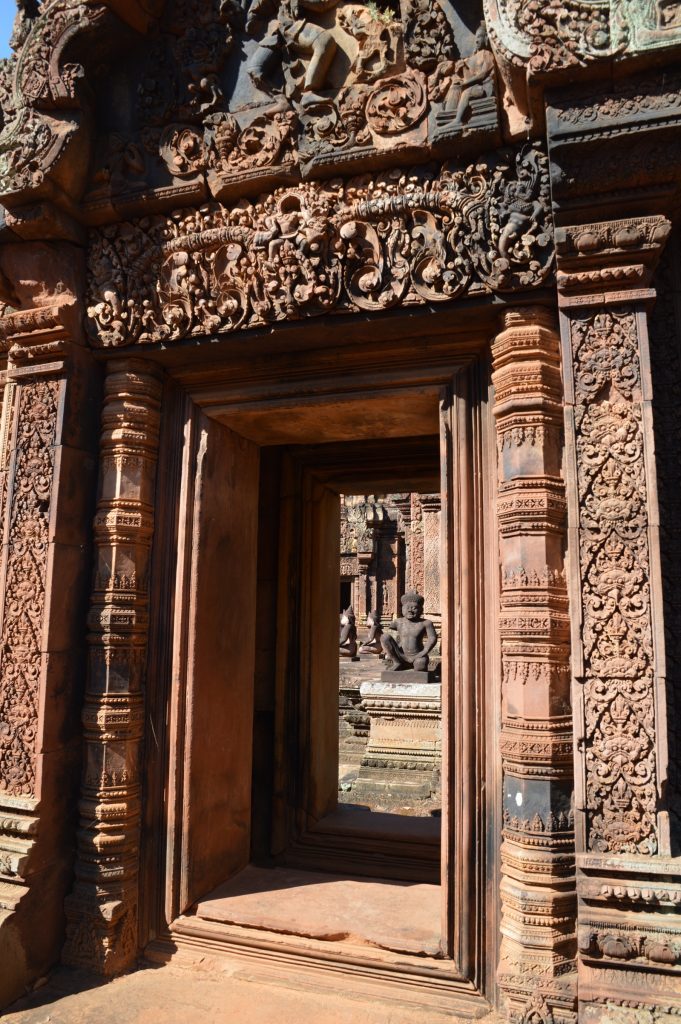
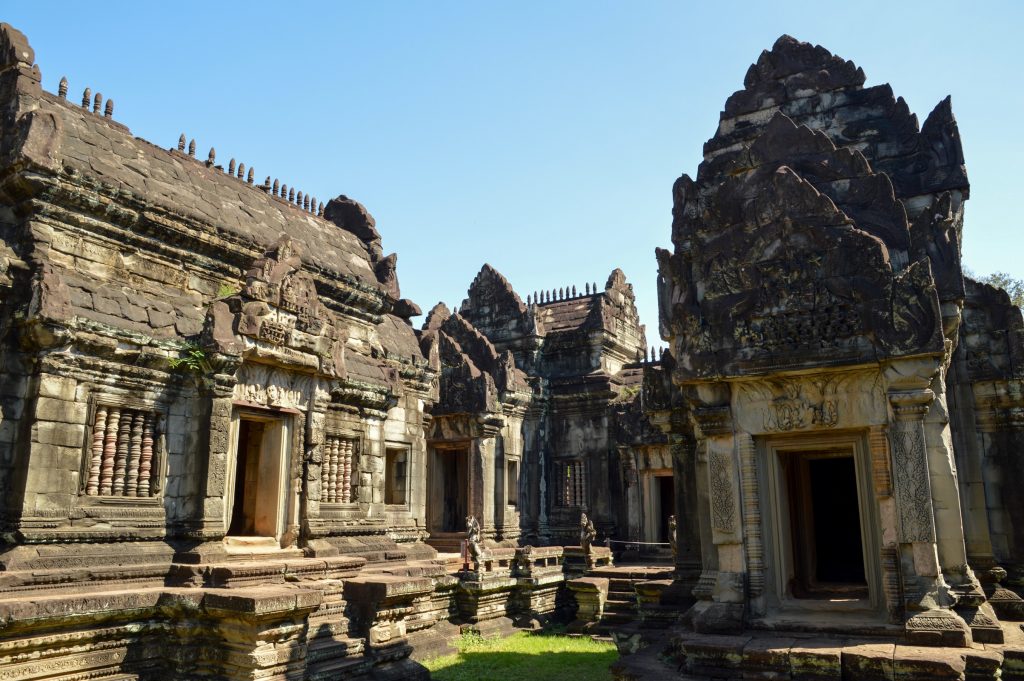

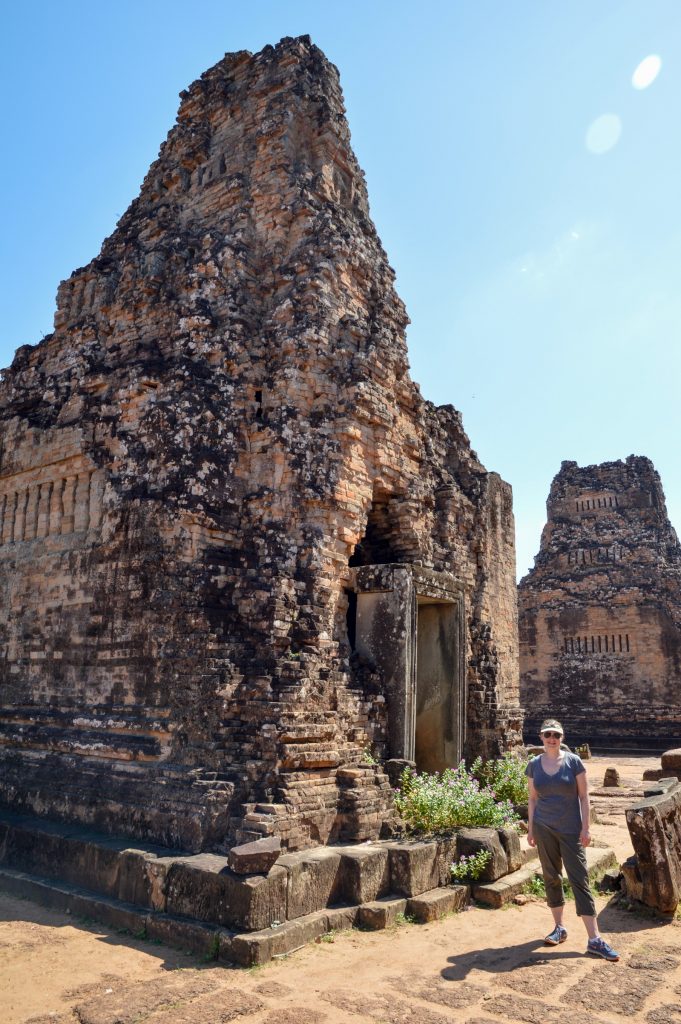
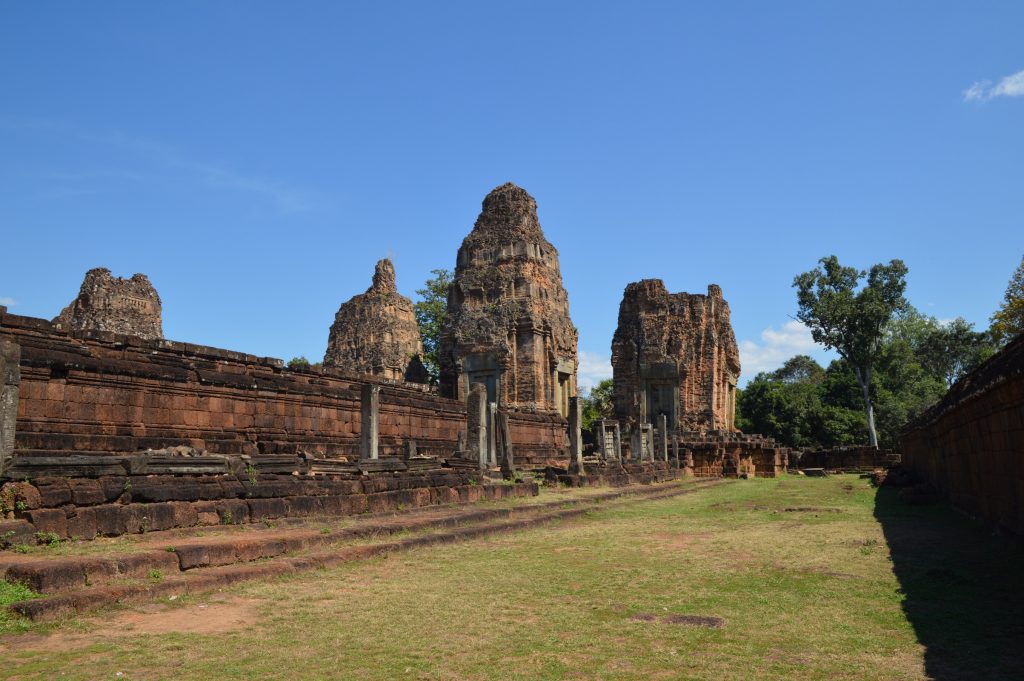
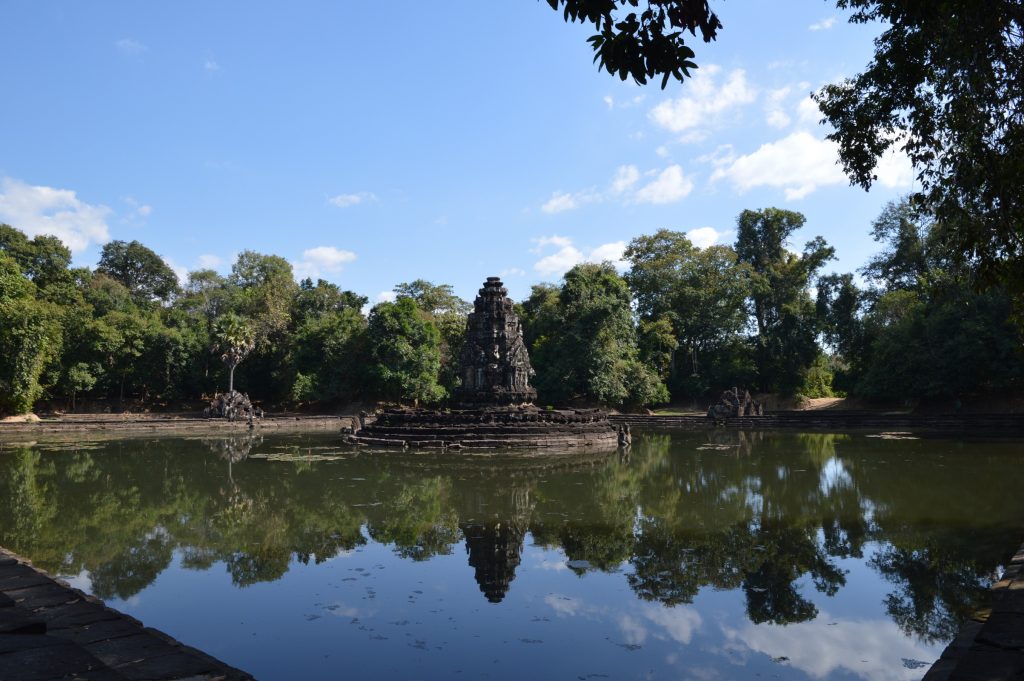
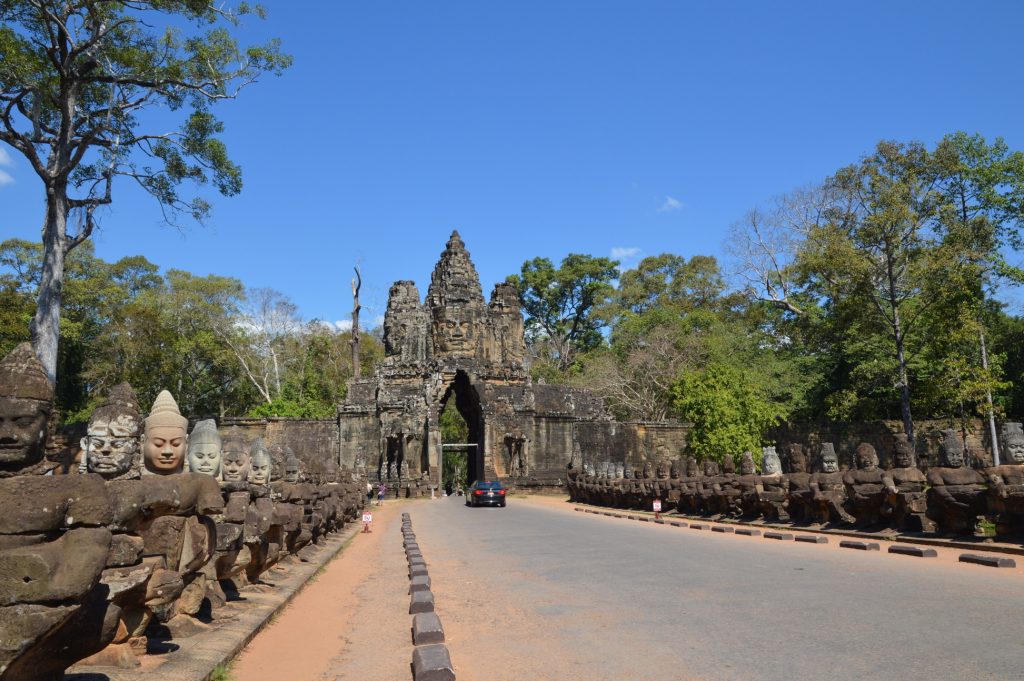
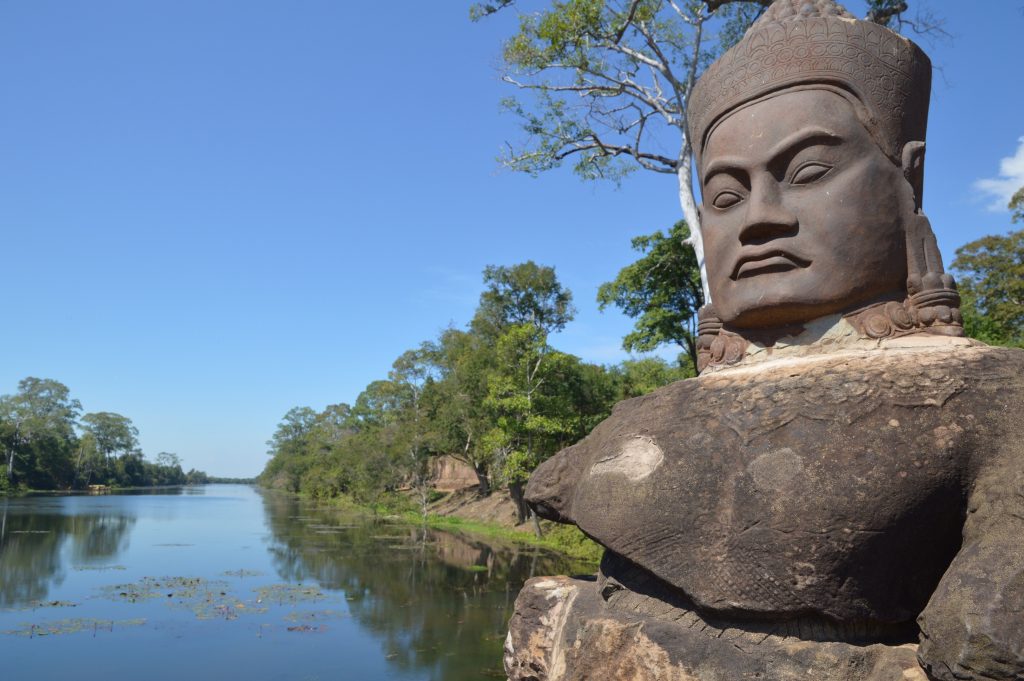
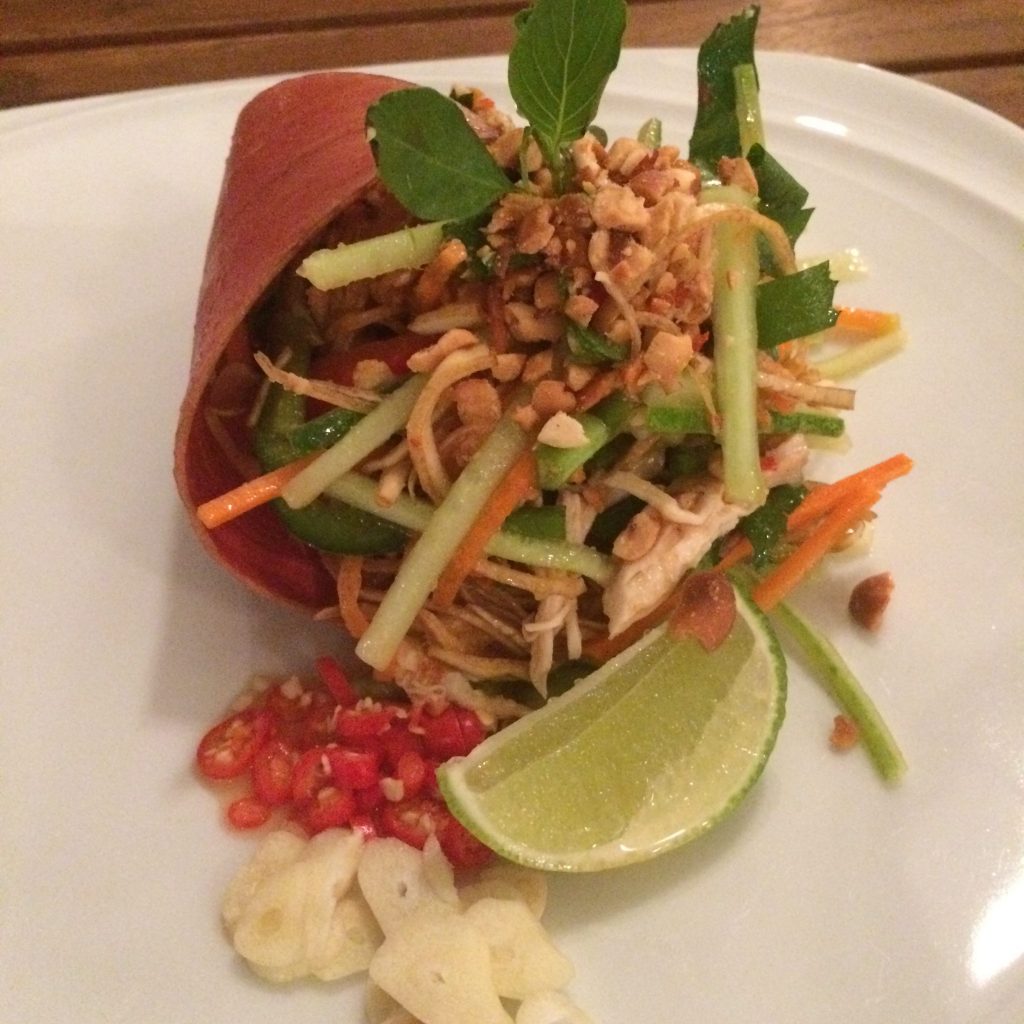
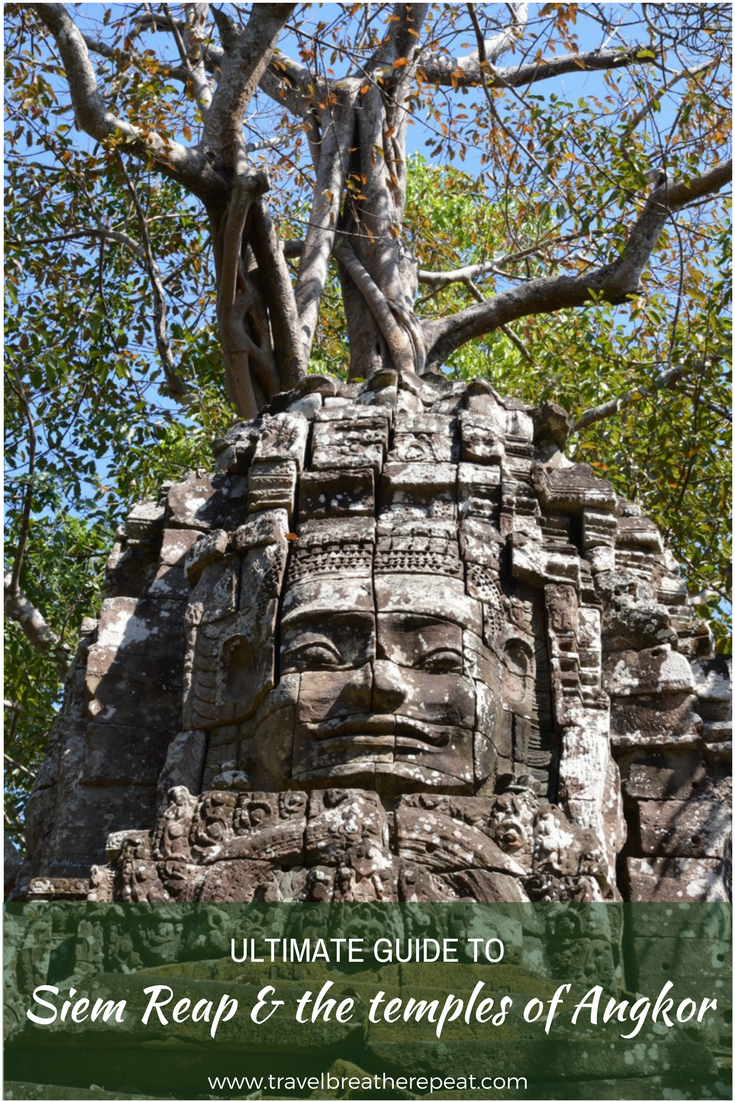
Pingback: The beers of Southeast Asia | Travel Breathe Repeat